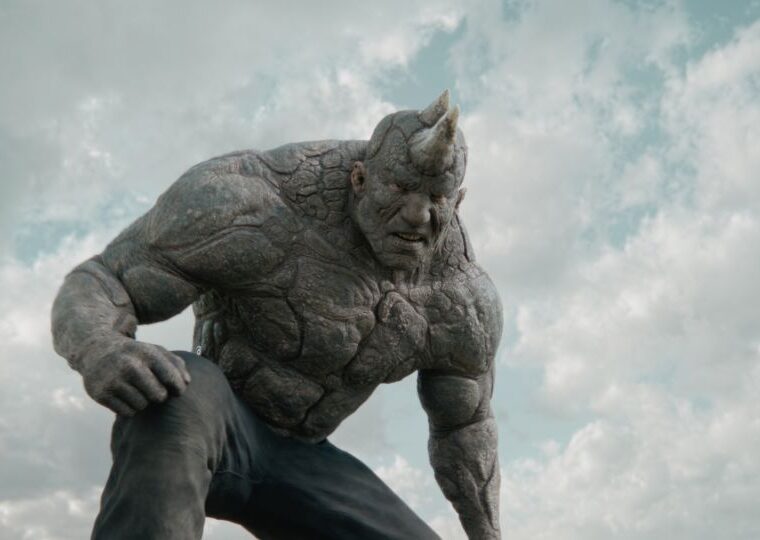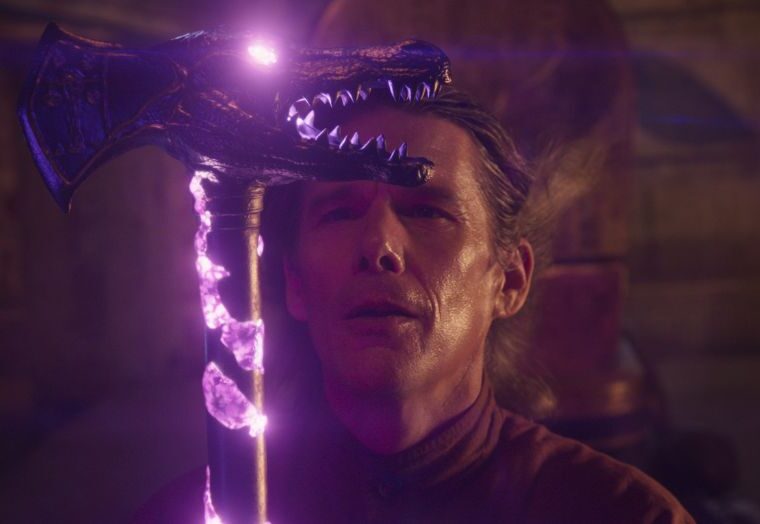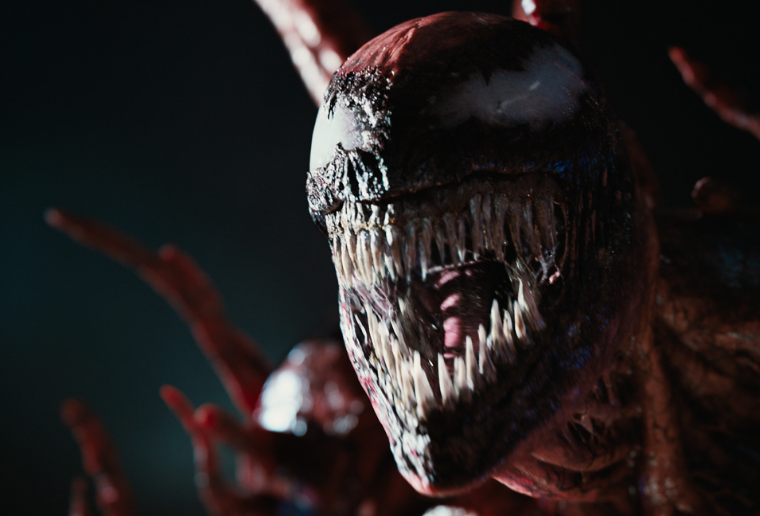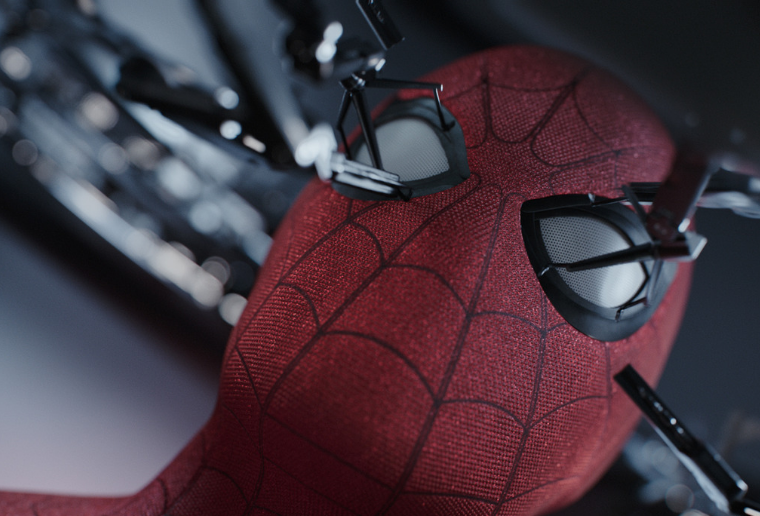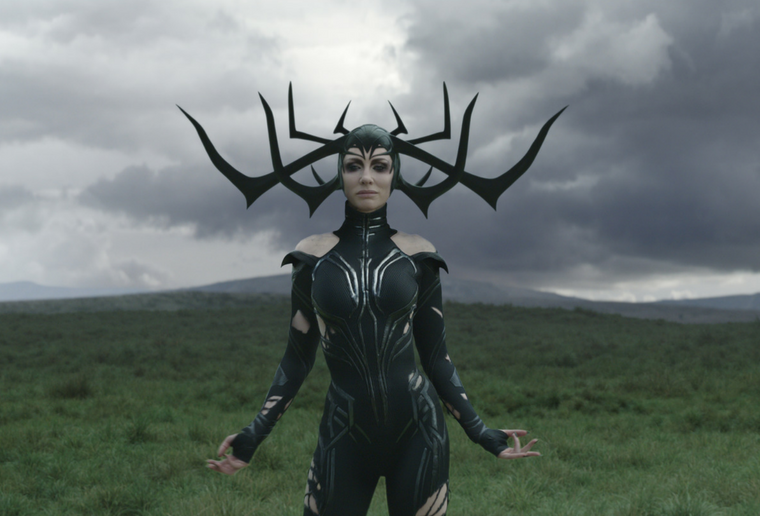Spider-Man: Far From Home Case Study
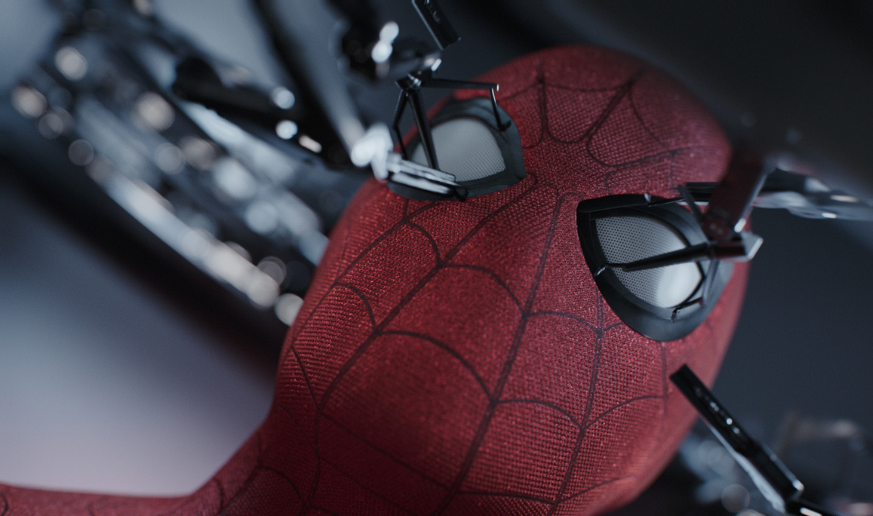
Case Study
Peter Parker wasn't alone in taking on the Iron Man mantle in Spider-Man: Far From Home; Image Engine bore some of the responsibility itself. The team took point on engineering a range of Stark tech; from drones to satellites, suit fabricators, and the tech tycoon's luxury jet. Stick on some AC/DC and dive into the blueprints for Image Engine's third foray into the MCU…
Avengers: Endgame was a tough act to follow. Spider-Man: Far From Home needed to cap off the final chapter in the Infinity Stones saga while detailing the emotional impact of the post-Iron Man fallout.
And it did so magnificently. Marvel’s Spider-Man sequel contrasts the operatic grandeur of Endgame with Peter Parker’s more intimate coming-of-age story. It’s the perfect end to one adventure and a tantalizing jumping-off point into the next.
Image Engine swung into the MCU for a third time to help tell the story. Previously responsible for a Norwegian coastline in Thor: Ragnarok and the Wakandan post-credits tease in Captain America: Civil War, the studio took on a new challenge for Spider-Man: Far From Home: building an arsenal of Stark tech both friendly and hostile across some 215 shots.
London Bridge is falling down
Peter Parker has big boots to fill in Spider-Man: Far From Home. The world needs an Iron Man successor, and all eyes are on the young hero. Yet, as would any 16-year-old, he’d prefer to do away with responsibility and spend time with his high school crush on a European field trip.
Quentin Beck, a.k.a. Mysterio, has other plans. A disgruntled ex-Stark scientist, Beck is eager to secure the Iron Man mantle for himself. Using a combination of Stark’s Binarily Augmented Retro-Framing (B.A.R.F.) system and a fleet of drones, Beck summons illusory elemental creatures that only he is capable of stopping, or so he would have our heroes believe.
“These drones comprised a large amount of our work on Spider-Man: Homecoming,” says Joern Grosshans, VFX supervisor. “The main body of that work took place during the pursuit of Happy and Peter’s classmates through a London under siege.”
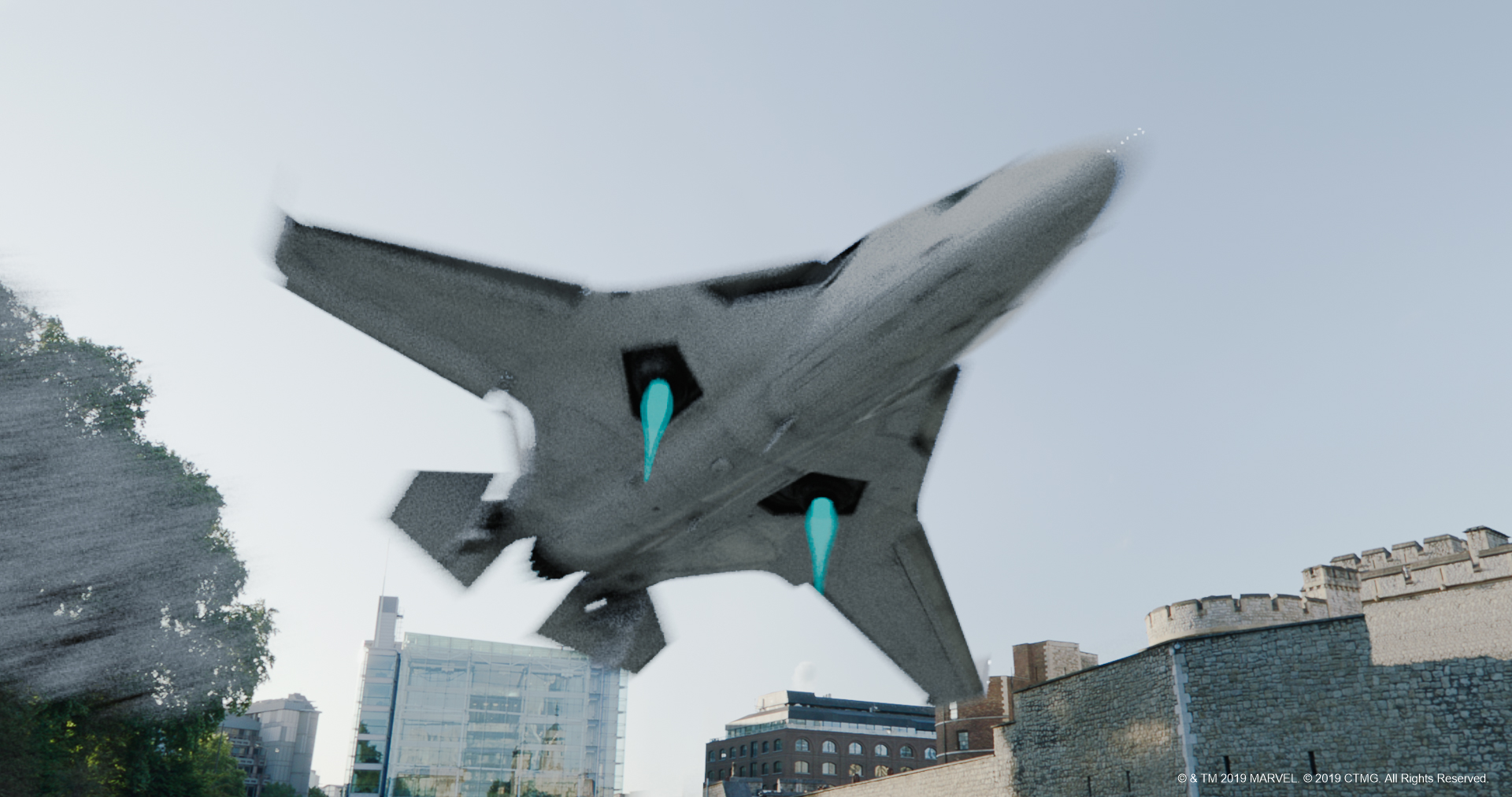
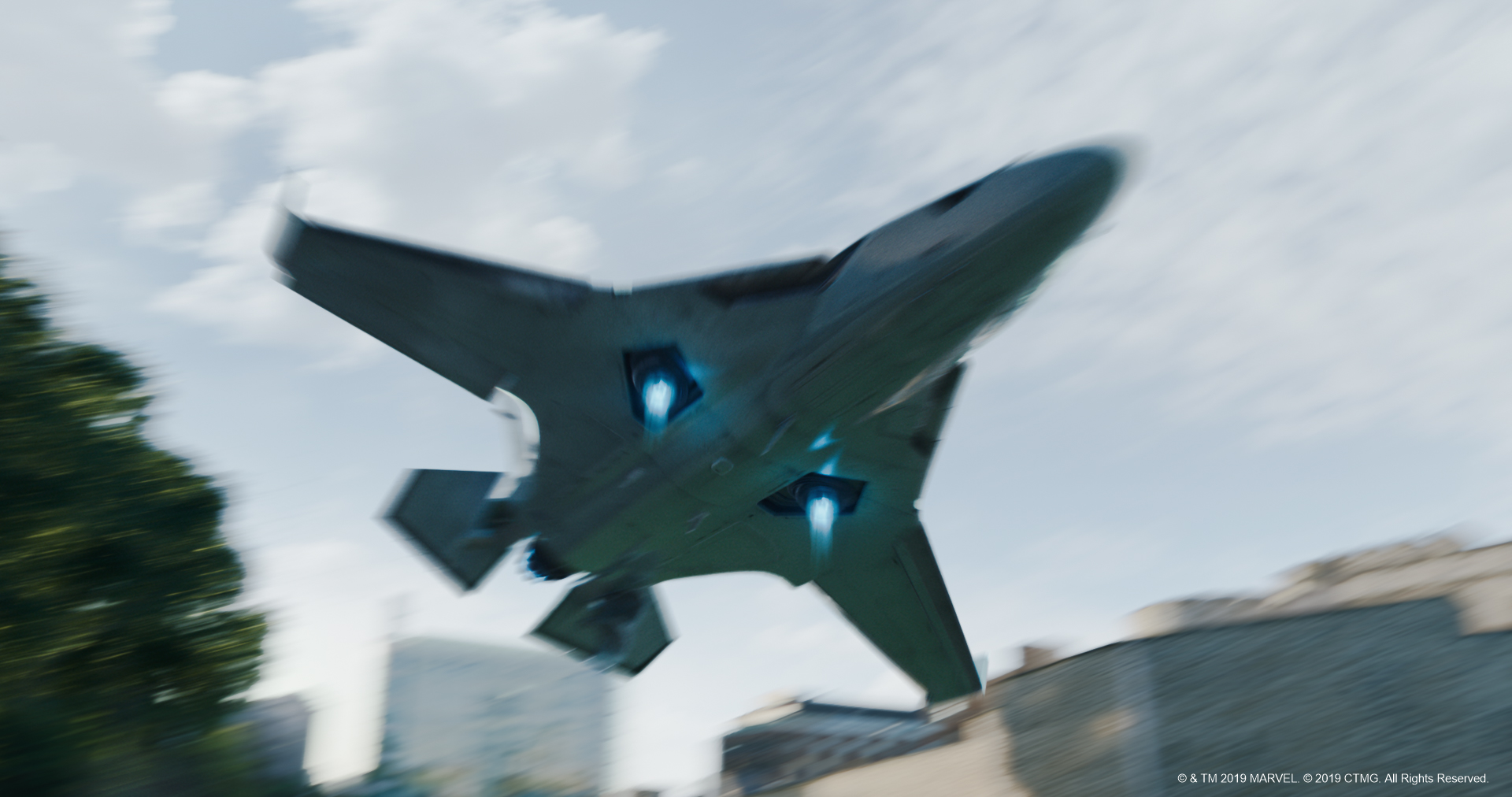
Image Engine created the full Tower Bridge environment using a large photogrammetry file supplied by 3D scanning specialists Clear Angle Studios. They then added elements such as the Stark jet, which explodes under fire, and the simulated fireballs, crowd and tree reactions, and debris.
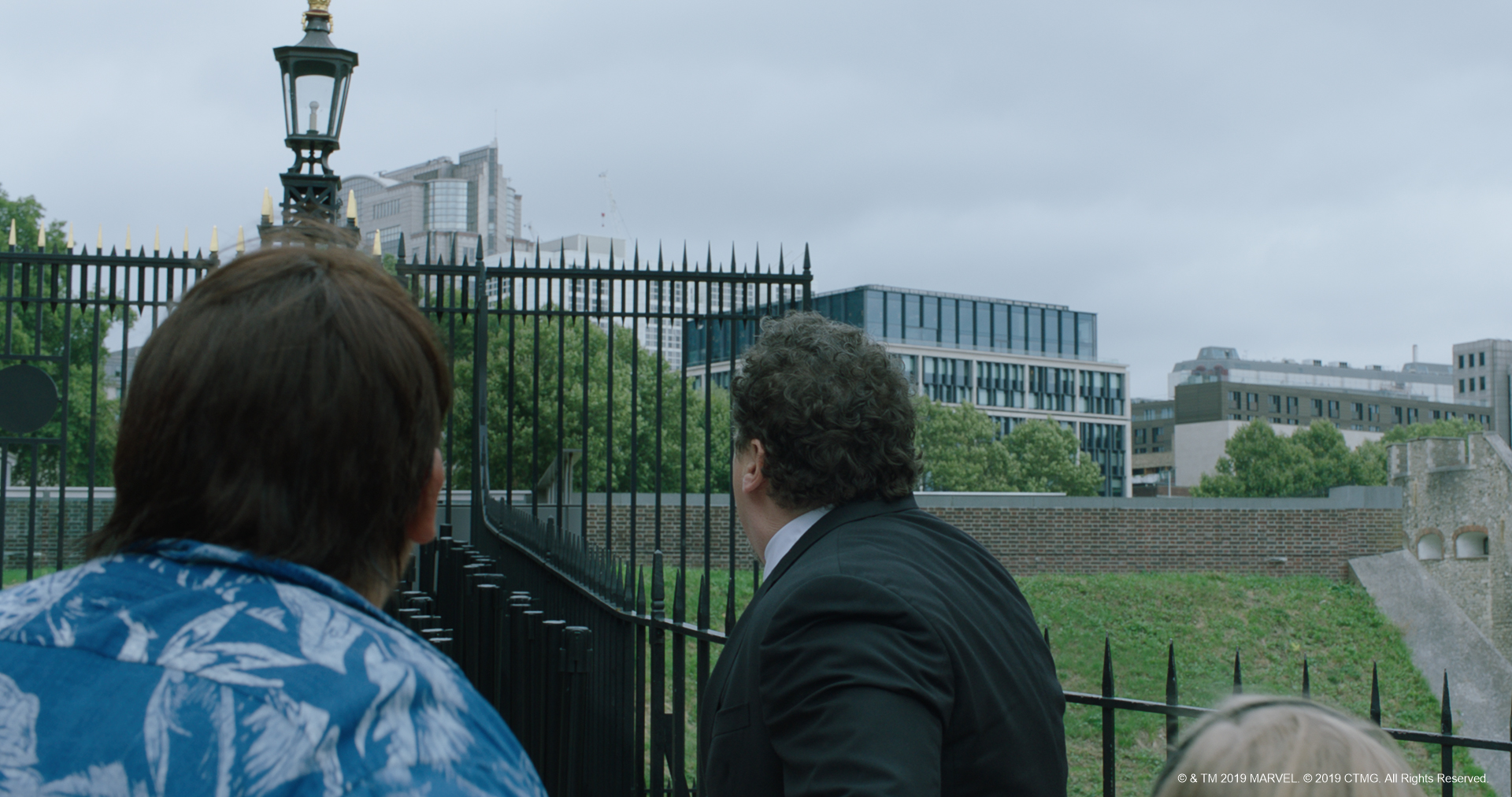
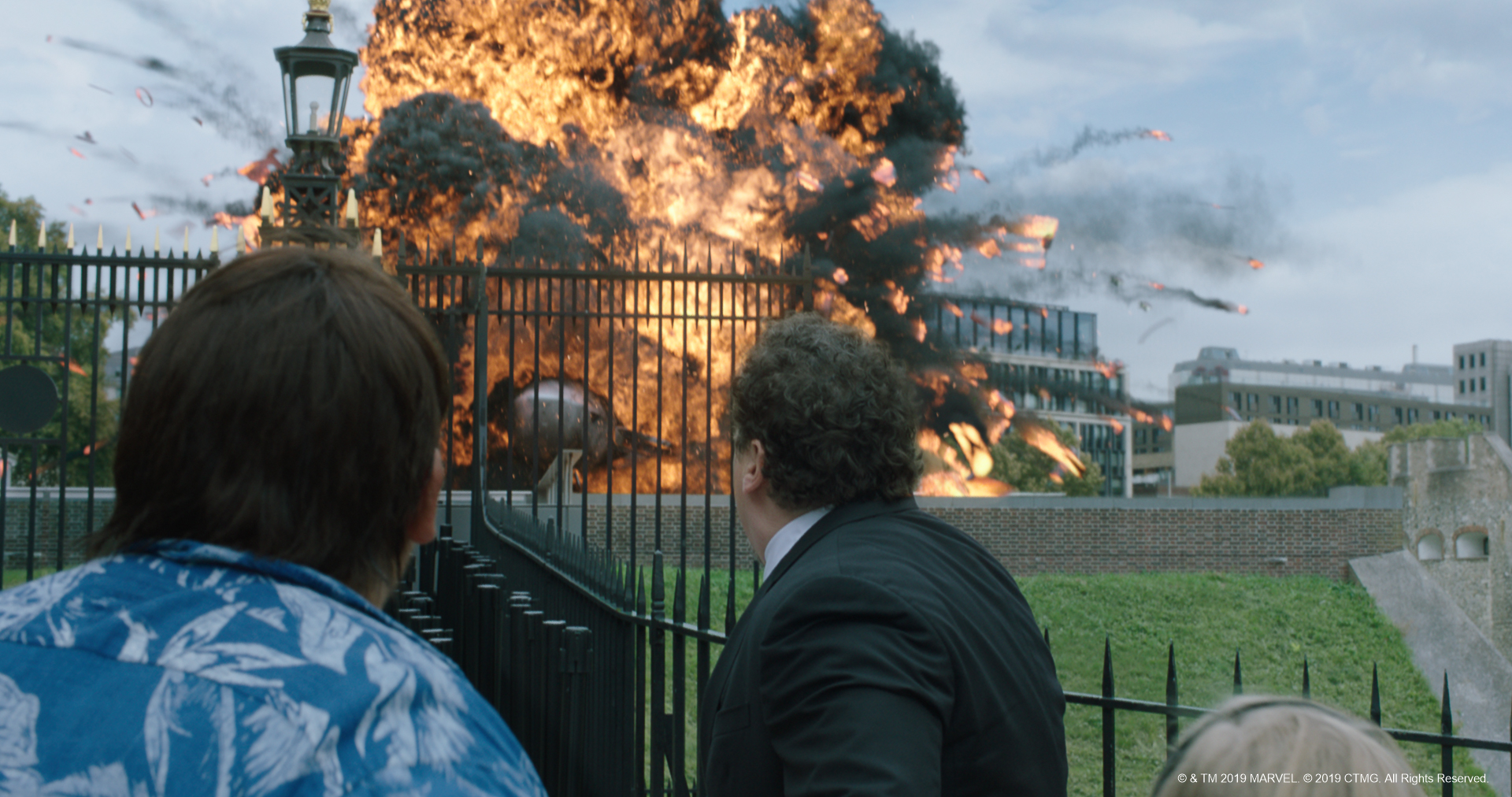
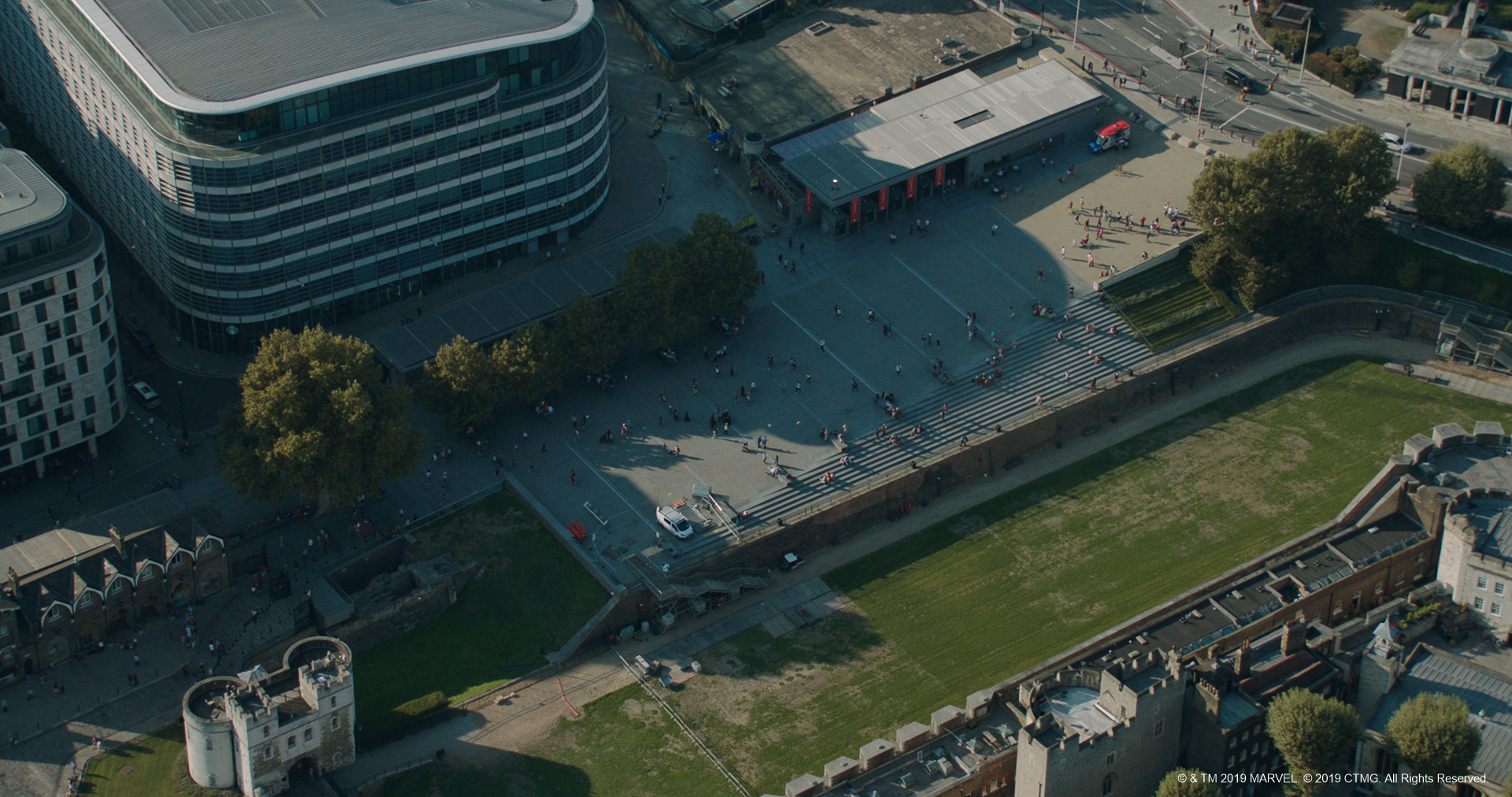
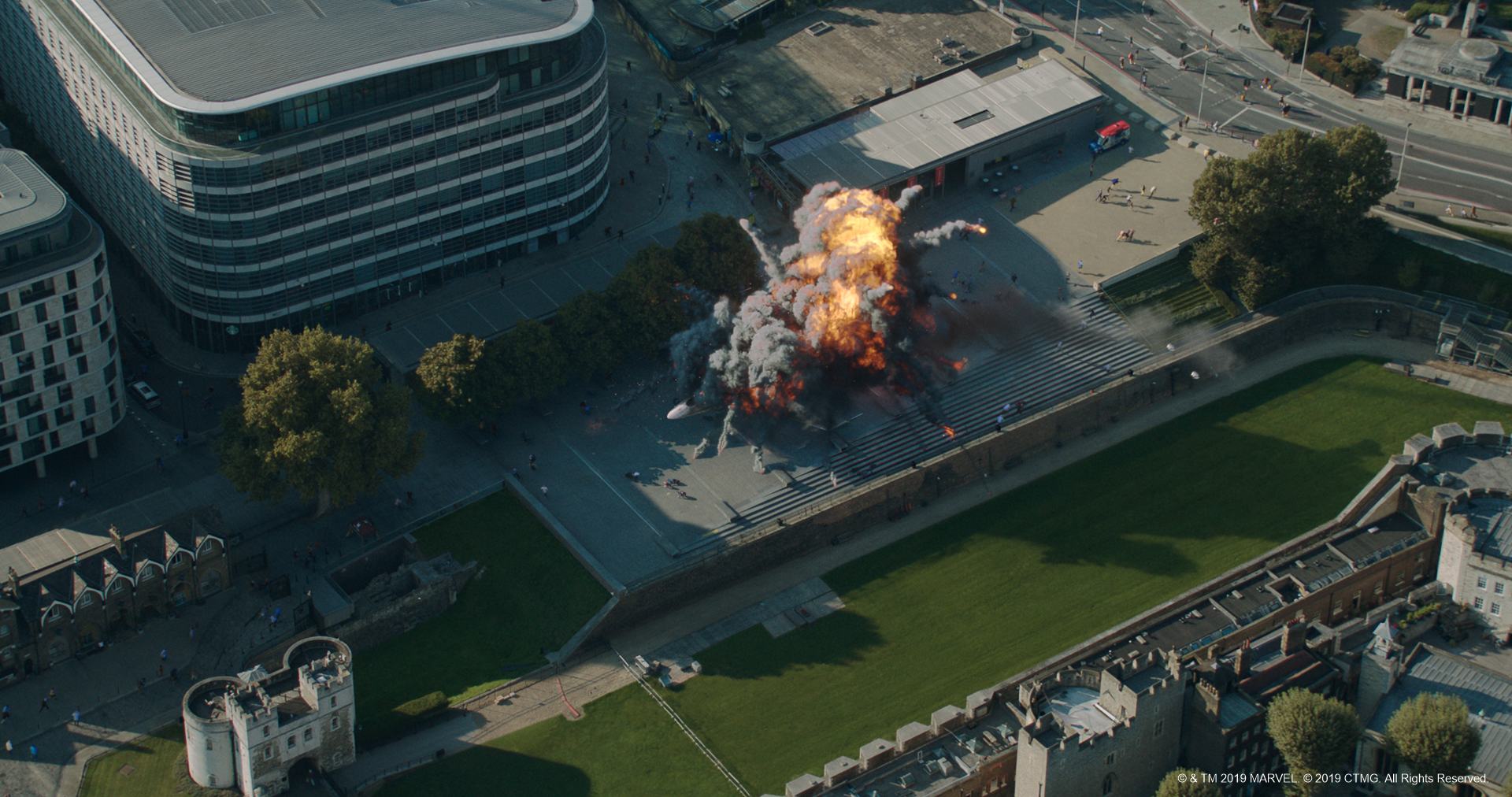
The perpetrators of this destruction are Beck’s reconfigured Stark drones. Modelled by Sony Pictures Imageworks, Image Engine took over the assets for animation, integration, and rendering. (Although the team did have some influence on the different stages of the drone’s destruction, in addition to the design of the “sonic” weapon effect that appears in the film’s third act – itself a callback to the sonic technology used in 2008’s The Incredible Hulk.)
Droning on
It was in the movement of these swarming, killer robots that Image Engine exhibited its performance know-how.
“The drones are Stark Industries tech, so they’re sophisticated,” says Jeremy Mesana, animation supervisor. “The production wanted this intelligence to shine through in drone performance. They needed to exhibit complex programming that enabled them to make decisions.
“We needed to balance this so that the drones were smart, but not so smart that they could catch the people they’re after!” continues Mesana. “We solved this by having them able to execute only one command at a time. Each motion is clear and deliberate. It complements that sense of predatory, robotic intelligence without them becoming too powerful.”

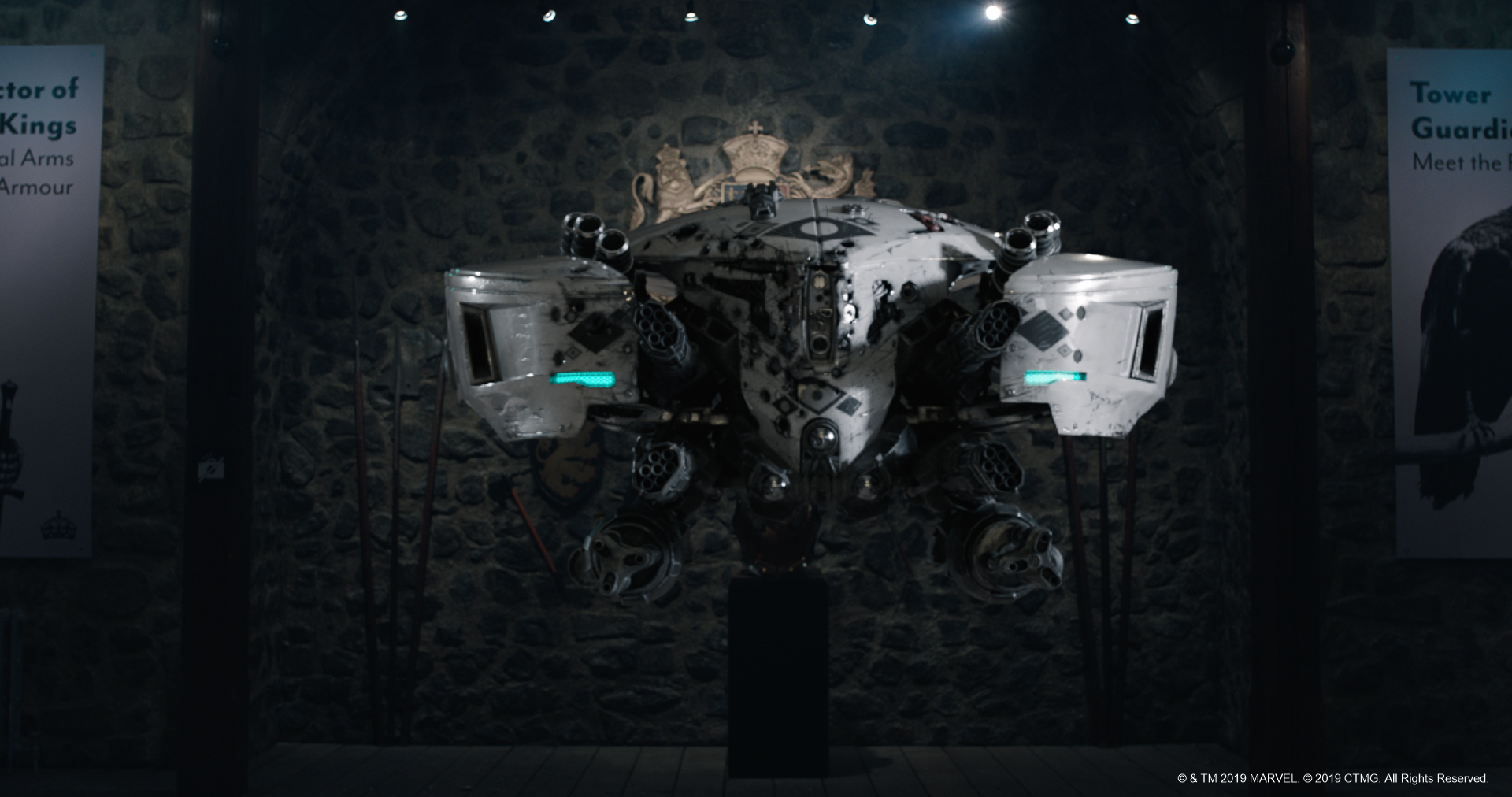

A standout drone performance occurs when Peter’s classmates seek refuge in the Tower of London’s Crown Jewels vault. They barricade themselves behind a large metal door, which the pursuing drone commences cutting.
“The entire cutting scene was full CG,” says FX lead Julien Depredurand. “We lookdev’d elements like smoke and dripping, molten metal. We also developed a system that auto-generated the resulting spark interactions. It vastly optimized the process of iterating on shots.”
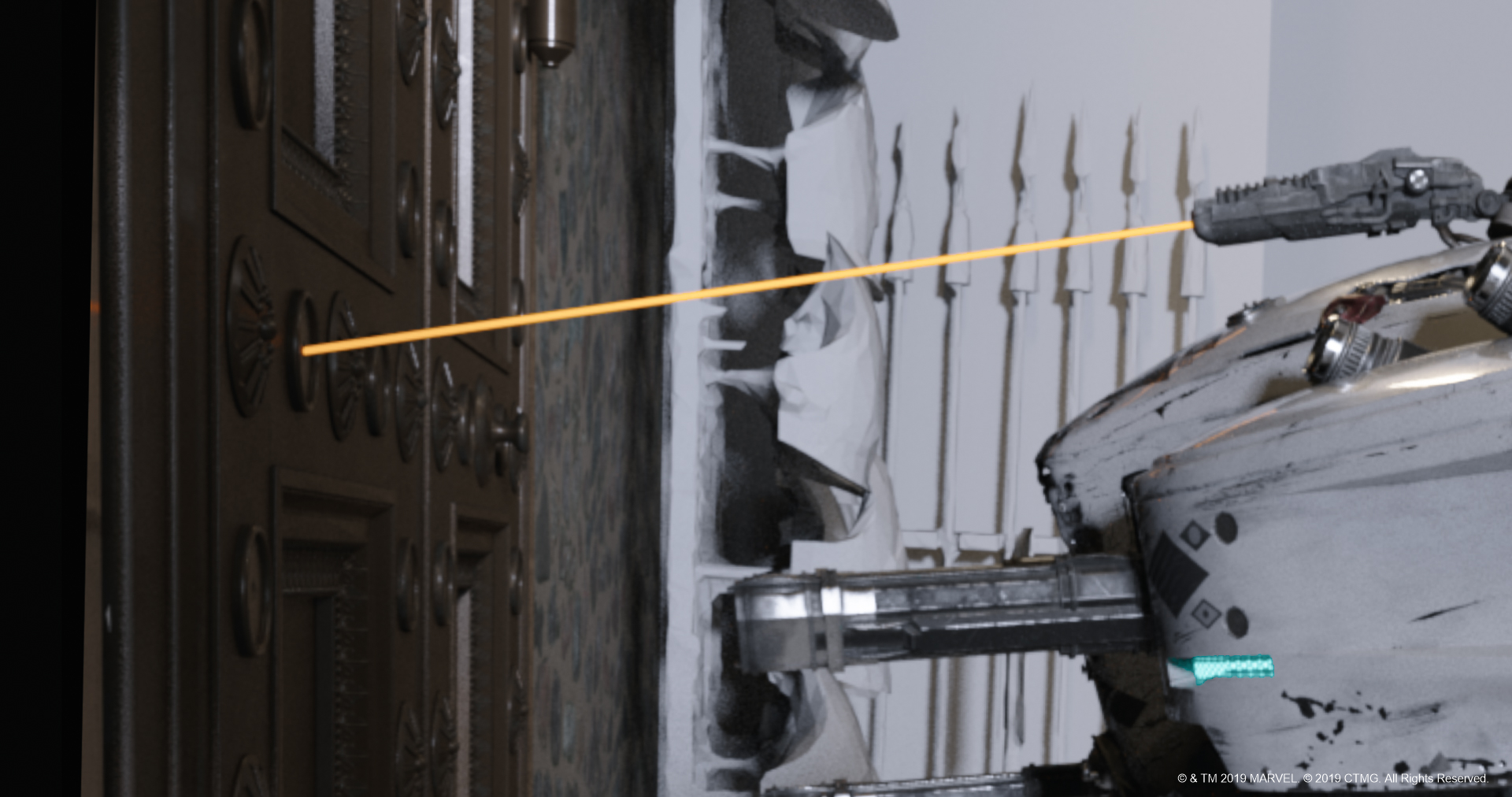
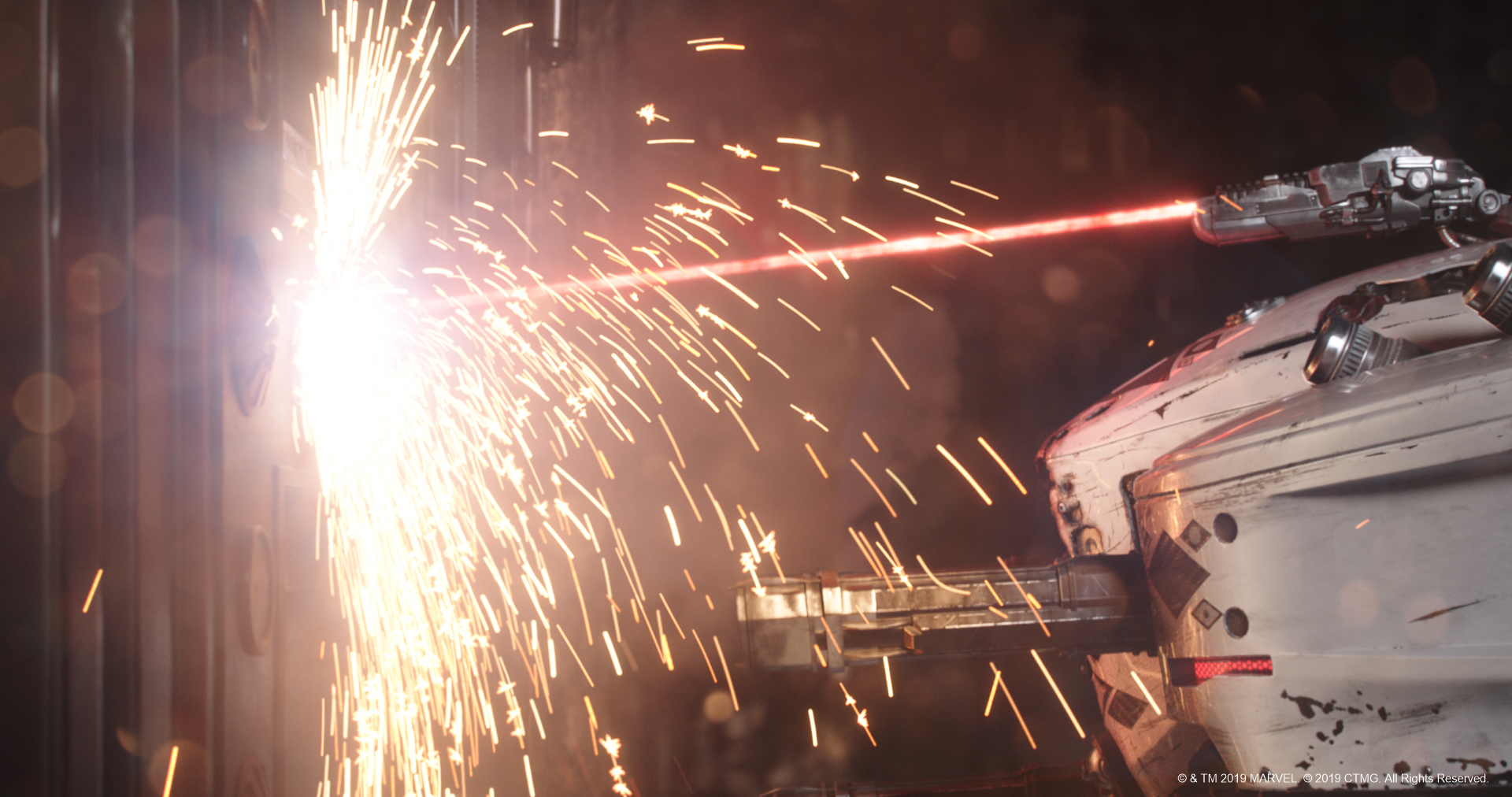
Orbital strike
From a single drone to a swarm: Image Engine also took point on the launch of Mysterio’s attack drones from an orbiting Stark satellite. Here, an FX particle simulation handled the droves of tiny robots spilling from the spacecraft.
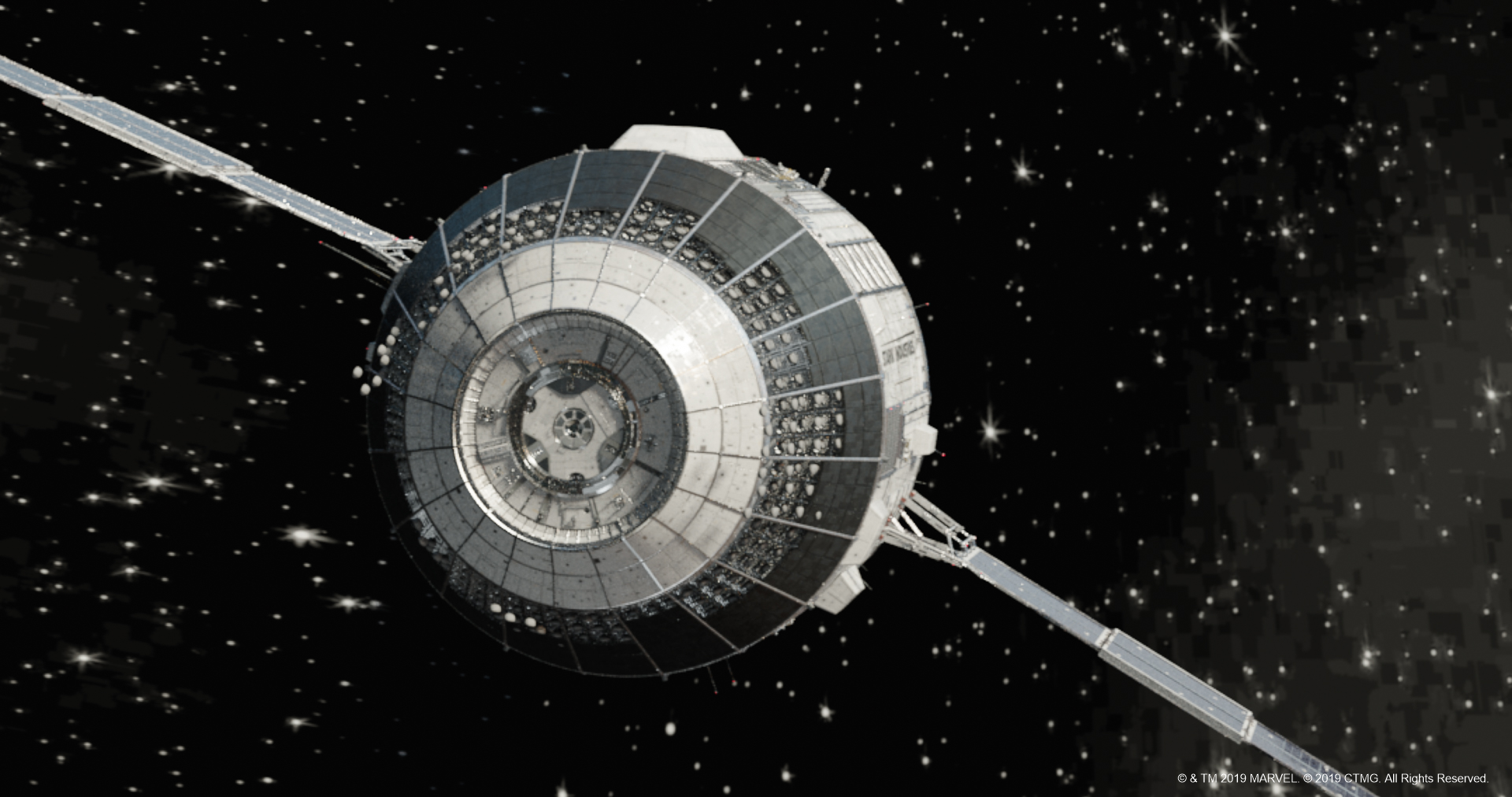
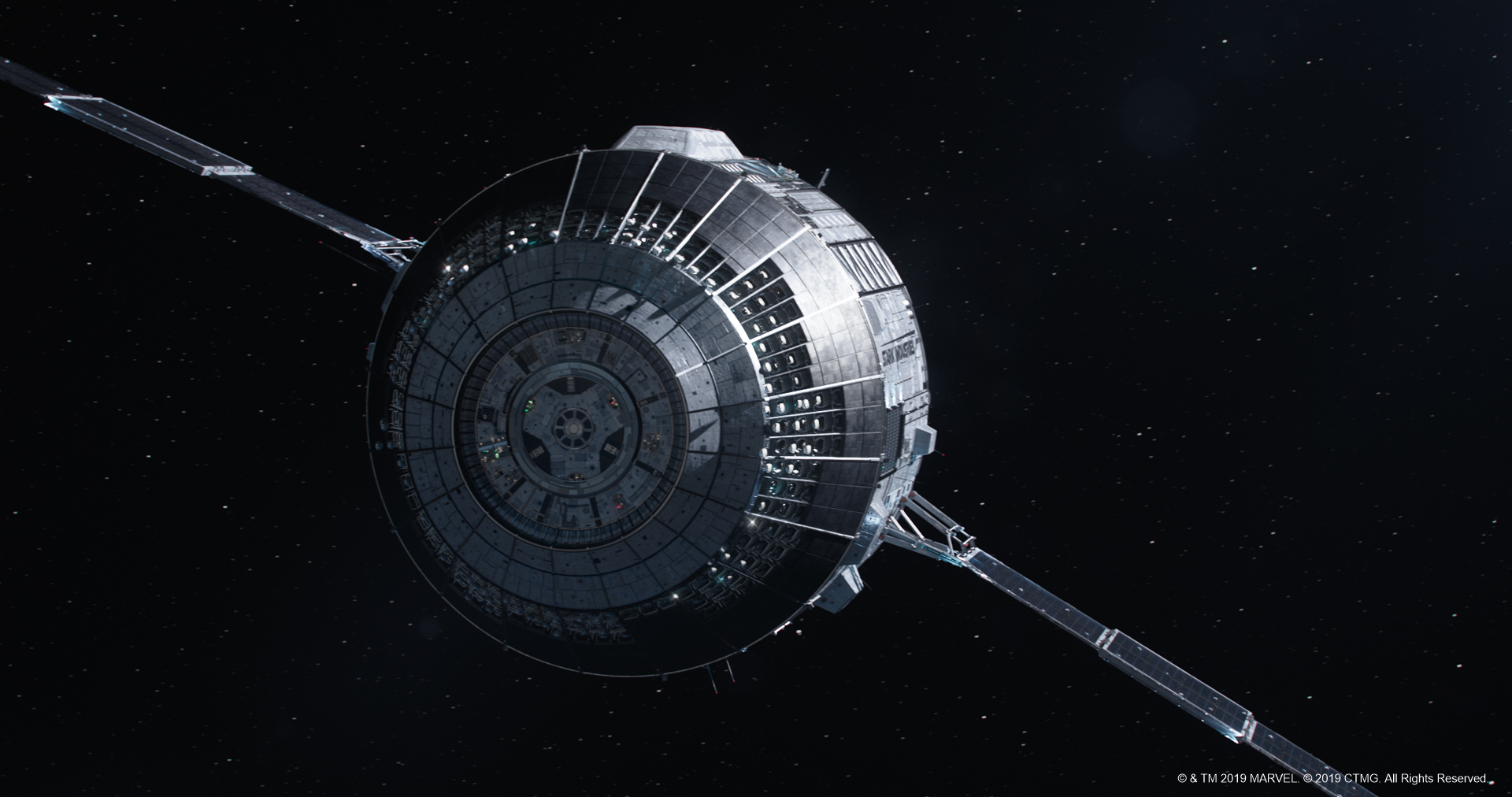
“We wanted to create the feeling that this mass of technology possessed a hive-mind intelligence,” says Alex Lombardi, FX supervisor. “There’s a sense of AI behind the movement of this drone cloud. It was a complex simulation.”
Image Engine also built the satellite from which the drones launch. “There was a fine line to straddle,” says Edmond Engelbrecht, CG supervisor. “Stark technology is always very sci-fi, but the MCU grounds it in reality. We worked with the production VFX supervisor to dial in the right look, balancing sci-fi fantasy with real-world physicality.
“We then added a whole load of detail, essentially overbuilding the asset to ensure we had the flexibility to get closer if (and when) the camera needed to.”
A trip through the Alps
Audiences first witness this satellite when Peter’s field trip takes a diversion through the Alps. Here, the satellite fires a single drone encased in a protective shell; an asset also designed by Image Engine, along with the white-hot cloud of flame that emanates from its thrusters.
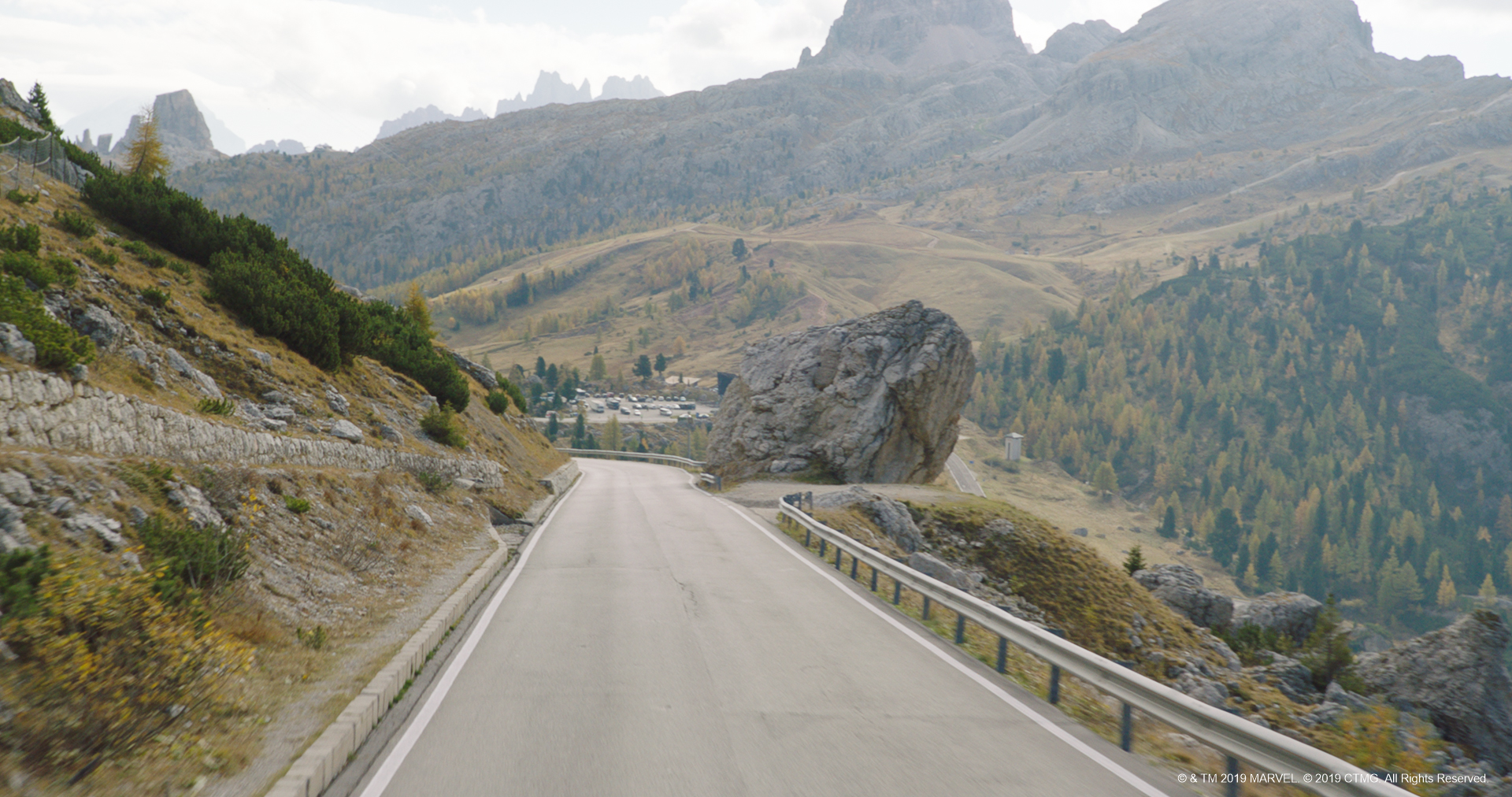
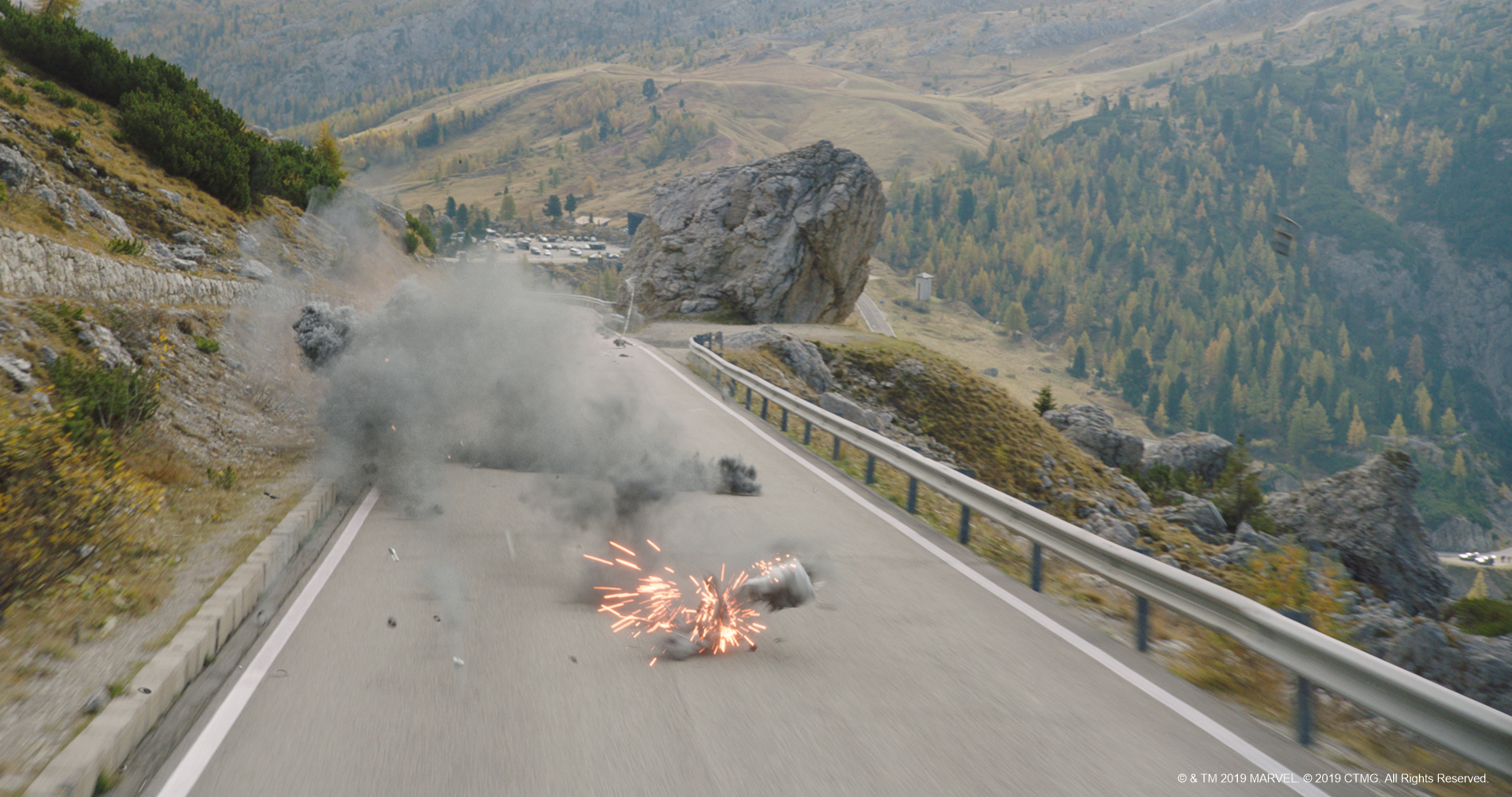
Almost as much of a challenge was the less exciting, but no less critical creation of the Alps exterior seen outside of the field trip bus in some 70 shots. “It’s the classic car comp – one of those things we see most often and is often one of the hardest to get right,” says Daniel Elophe, compositing supervisor.
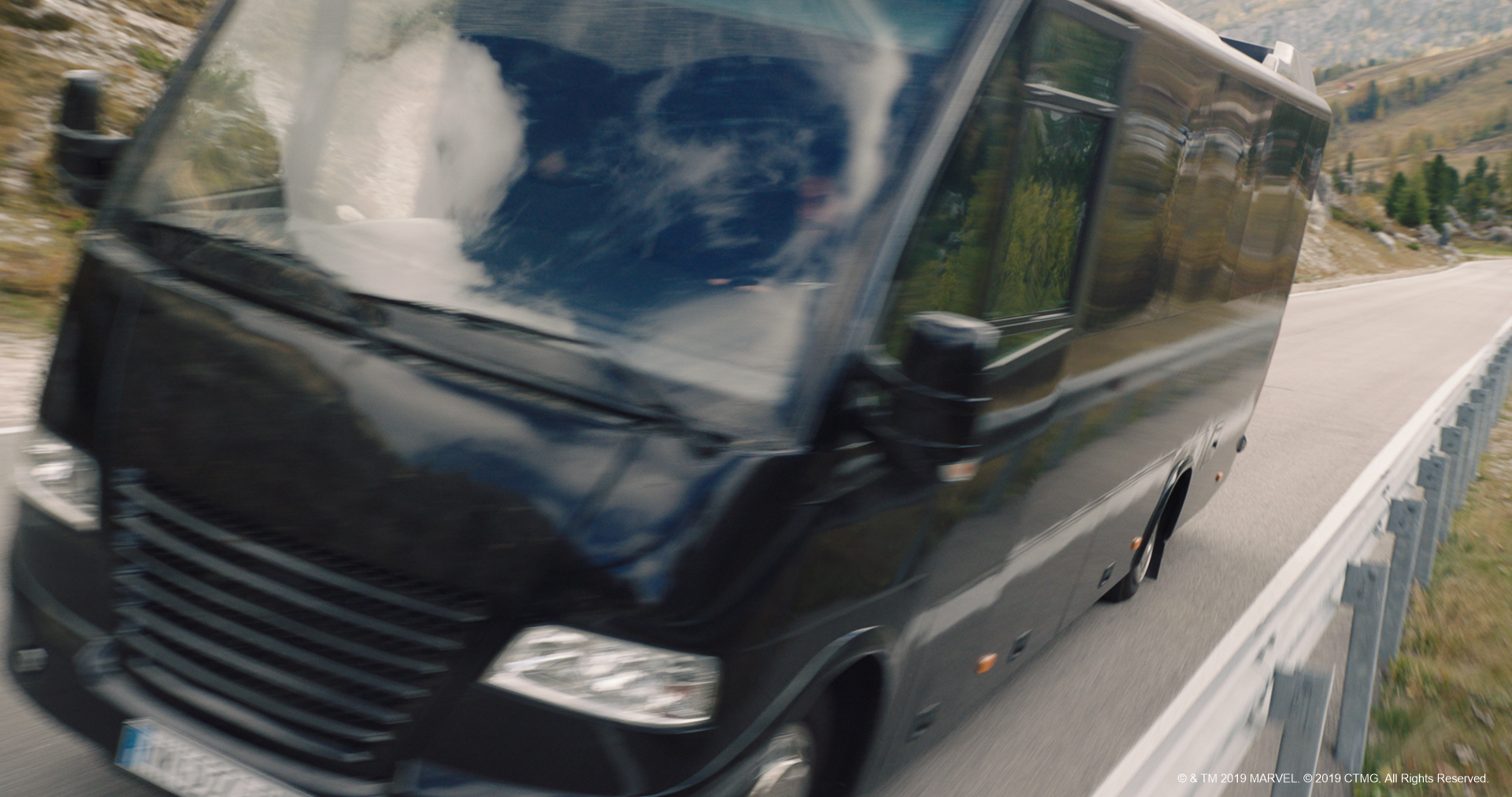
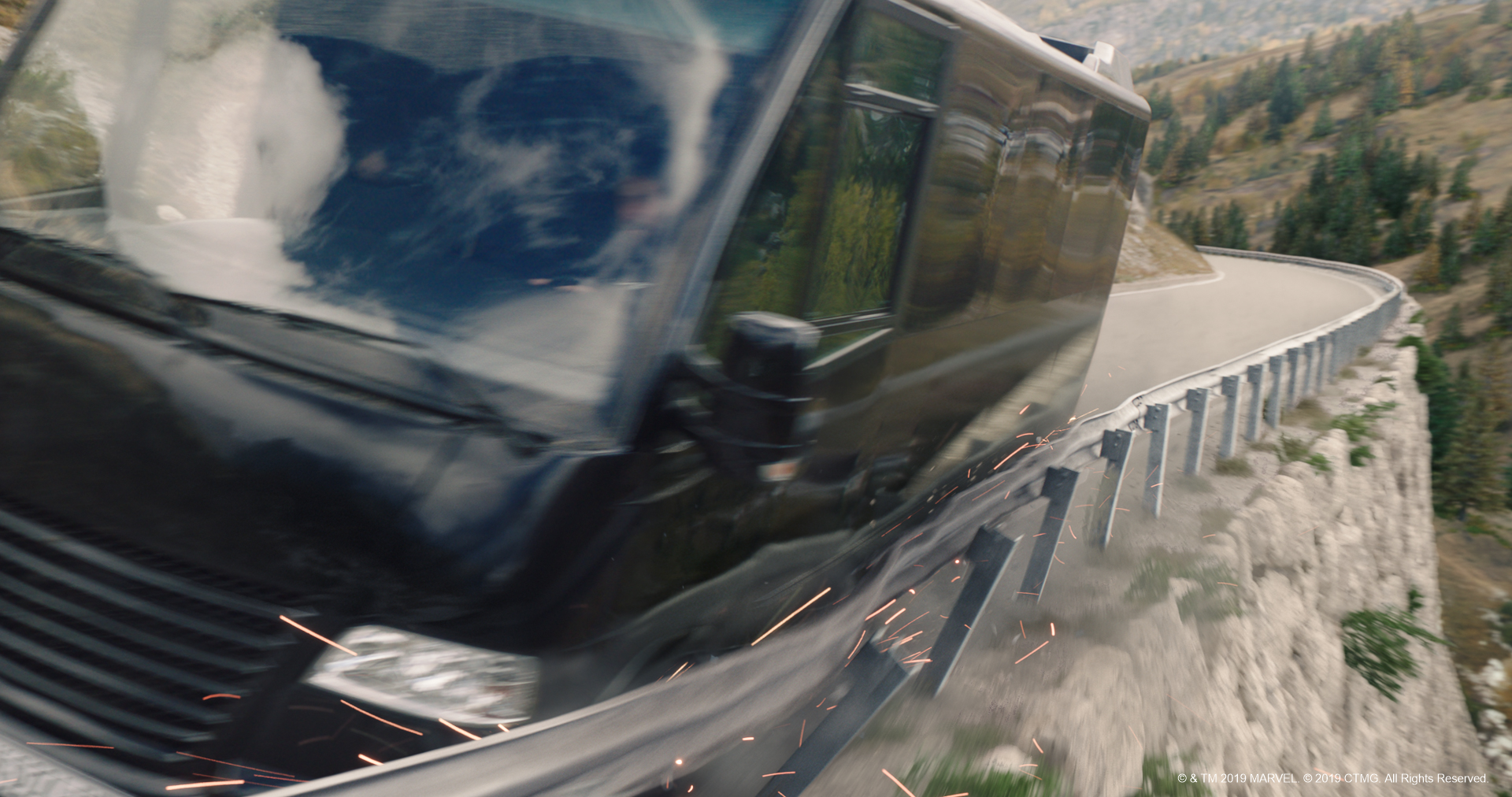
“We had plate footage from a 360-degree camera array shot on location, but due to alignment and continuity, we had to be resourceful in comp. We split plates out and rebuilt some of the backgrounds to give us enough material. We also pulled off some neat tricks, like creating cameras or stitching backgrounds together where shots had camera rotations and planar backgrounds wouldn’t work.
“The biggest challenge is in pulling that background and foreground together and locking in the right lighting,” he continues. “We tweaked exposure controls, added modulation of light flickering, and added jitter to give the sense of motion on the bus. Together, these things created the sense that the bus was on location when, in reality, that was true only of the exterior shots.”
The high life
From the humble bus to the decidedly not-so-humble Stark Jet; Tony Stark’s private aircraft is a limousine in the sky, brimming with all the brazen luxury we’ve come to associate with the character. It was up to Image Engine to create both the jet itself and its lavish interior.
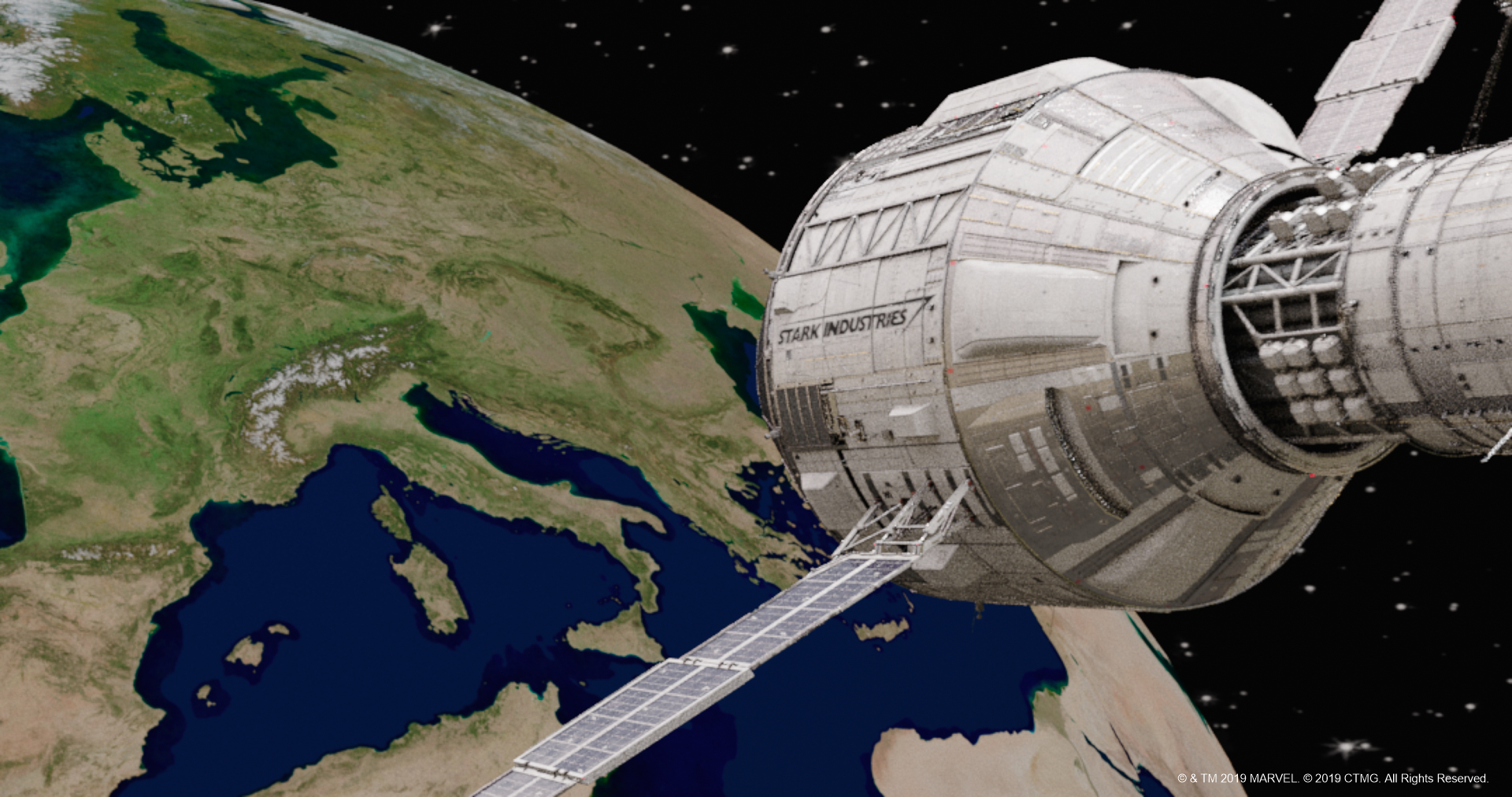
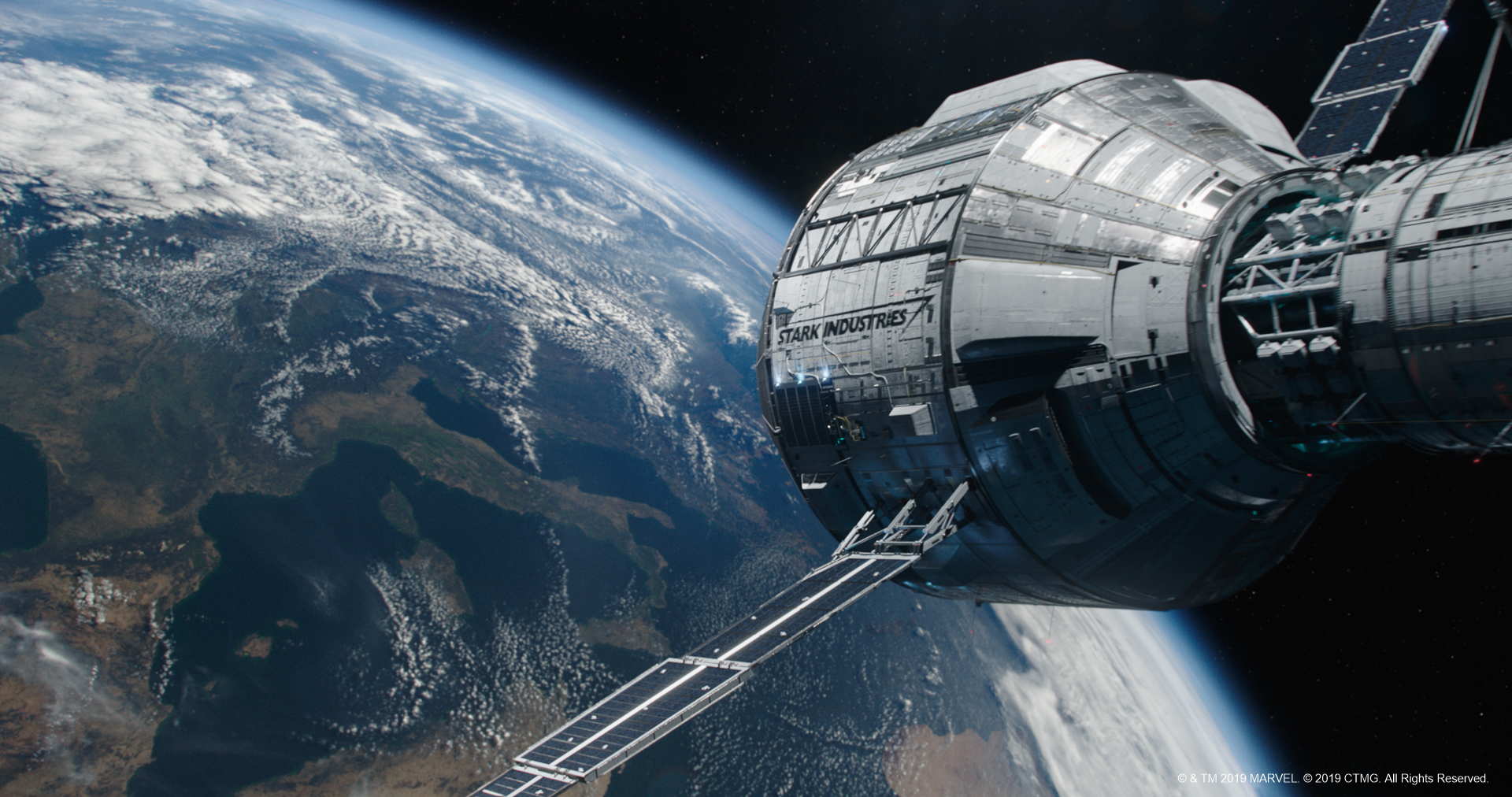
“We researched airplanes such as G7 Gulfstream jets and F35 thrusters. As with the satellite, it was a case of marrying that functionality with the extravagance and sci-fi of Stark,” says Grosshans. “Once we’d built the asset, we shared it with other vendors for use in their shots.”

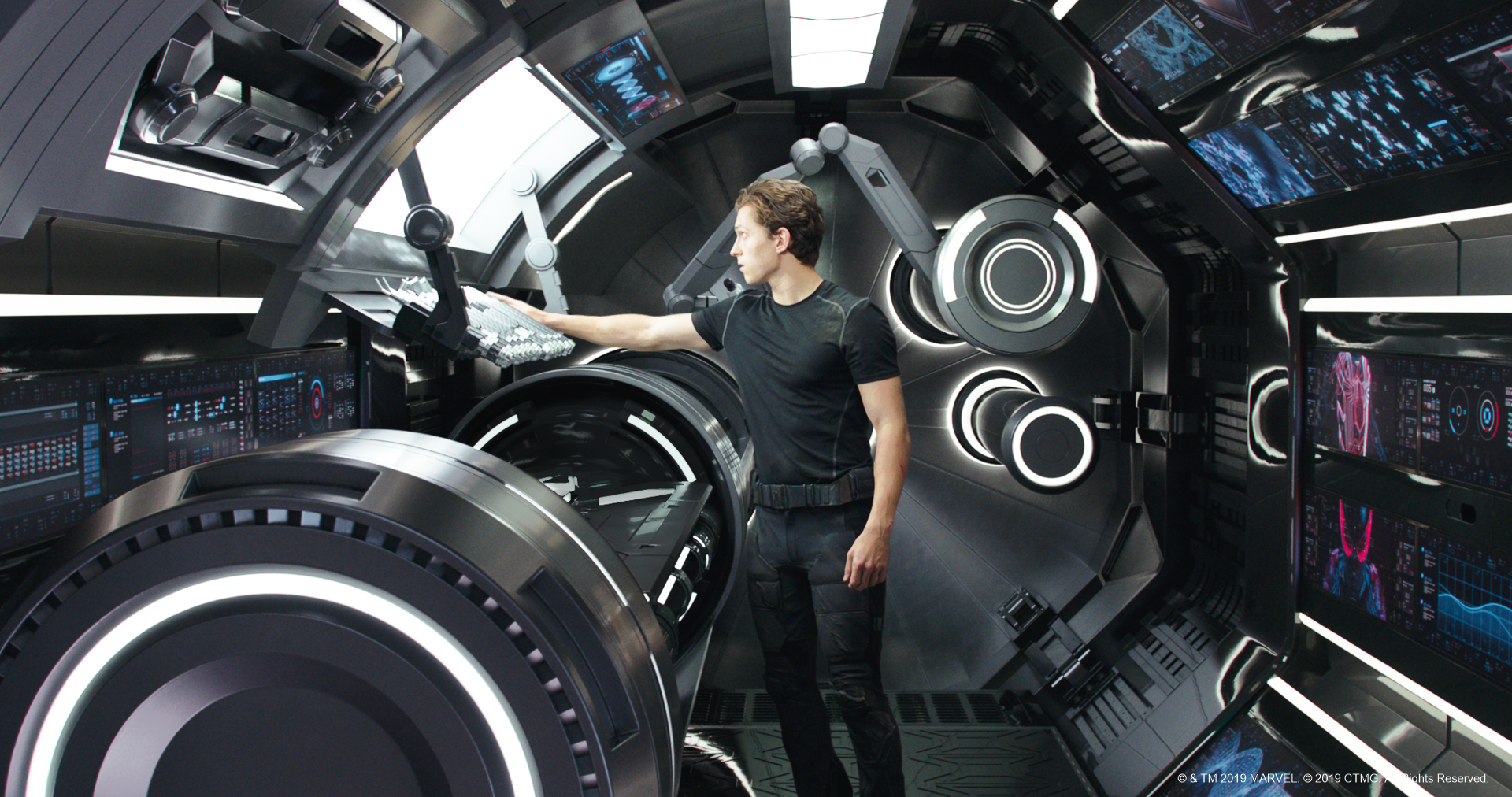
The filming of the interior scenes took place against the green screen. “The only things that survived from the plate were Jon Favreau and Tom Holland,” says Engelbrecht. “We built the jet interior as a detailed, beautiful environment. The challenge was integrating the two actors into it.”
“We built out two lighting passes to achieve this,” says Elophe. “We matched one to the plate and the studio lighting set up. We based the other on external CG environments, like aerodynamic lighting, CG clouds, and trees. In comp, we would defer to the lighting setup that produced the best results for the shot. We also used interior renders of the jet to create reflections on the surrounding windows.”
“The compositing team did such a great job on both this and the Alps sequence,” says Grosshans. “You wouldn’t guess that they’re green screen and not on location.”
Suit up
It’s in the Stark Jet that Peter reaches the apex of his character arc. Using the aircraft’s suit fabrication device he designs and builds a new battle suit for his final clash with Mysterio, channelling his nascent Tony Stark ingenuity in the process.
“It was a core story beat and a turning point for Peter’s character,” says Grosshans. “The production knew that there would be a lab in the back of the jet and there would be an Iron Man suit-building montage. Beyond that, the scene was primarily up to us!”
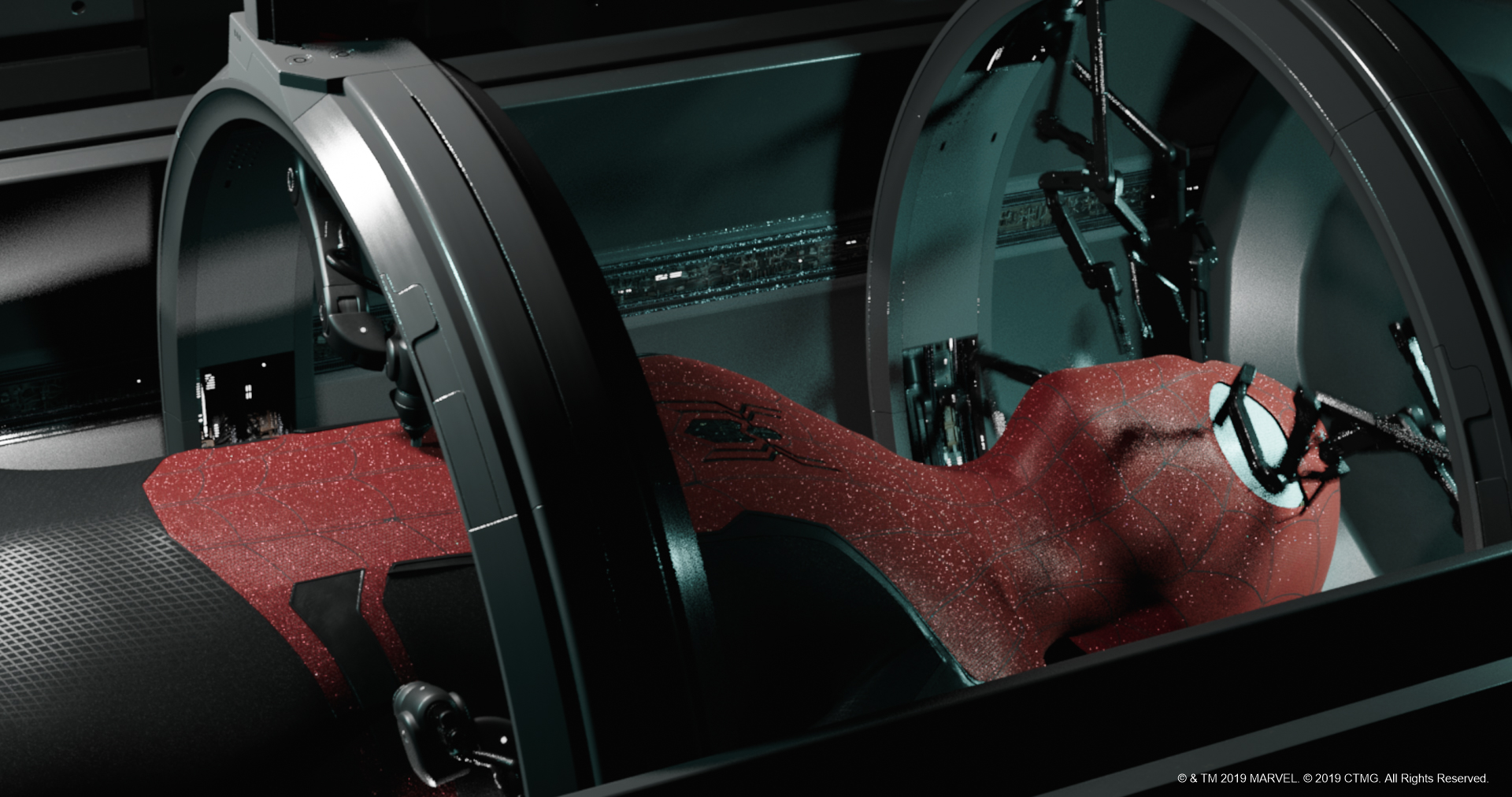
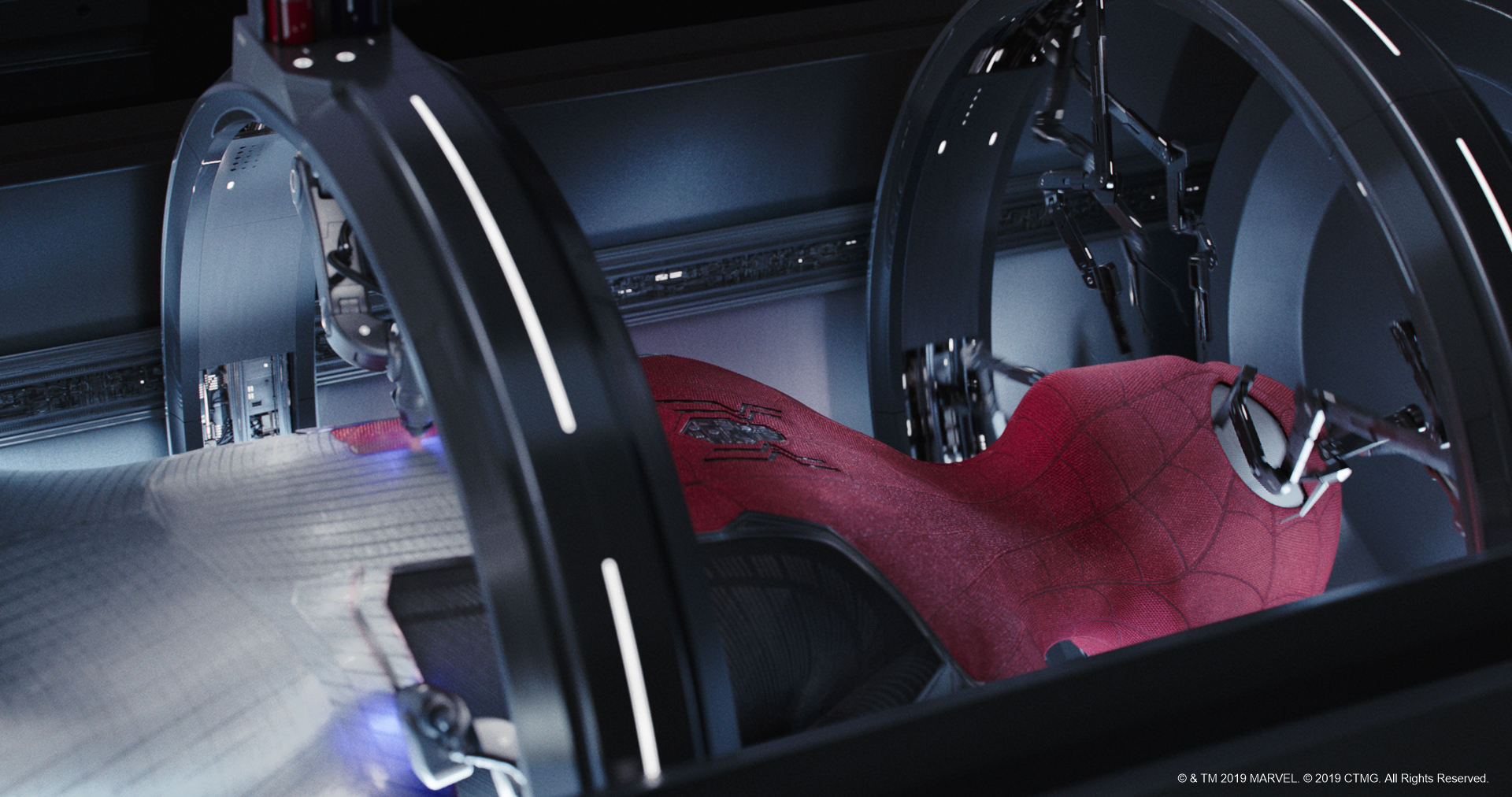
Image Engine built an intricate, multi-layered device, capable of weaving fabric and adding layers of kevlar to Peter’s suit – alongside some other significant details suggested by the Image Engine team themselves…
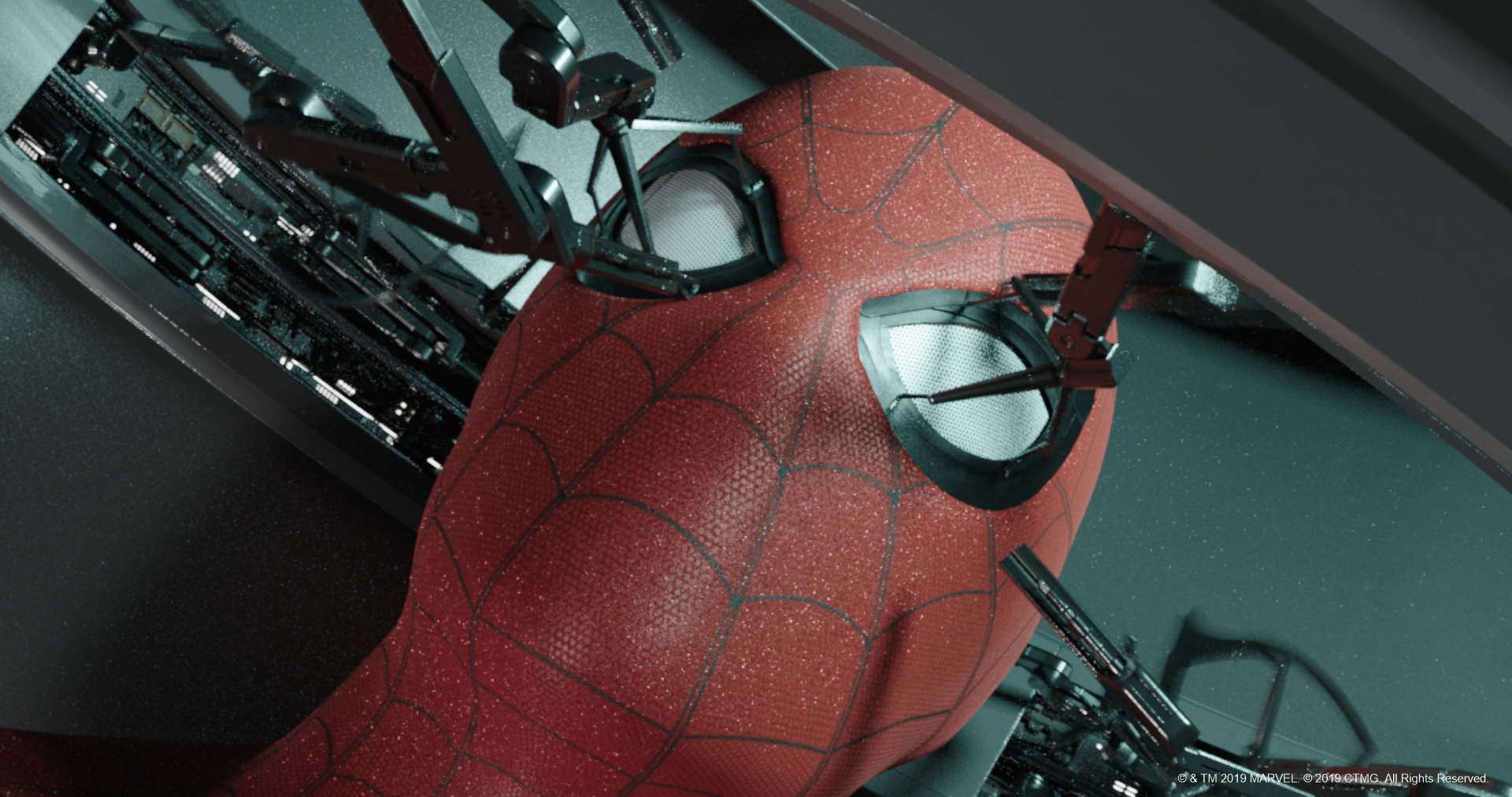
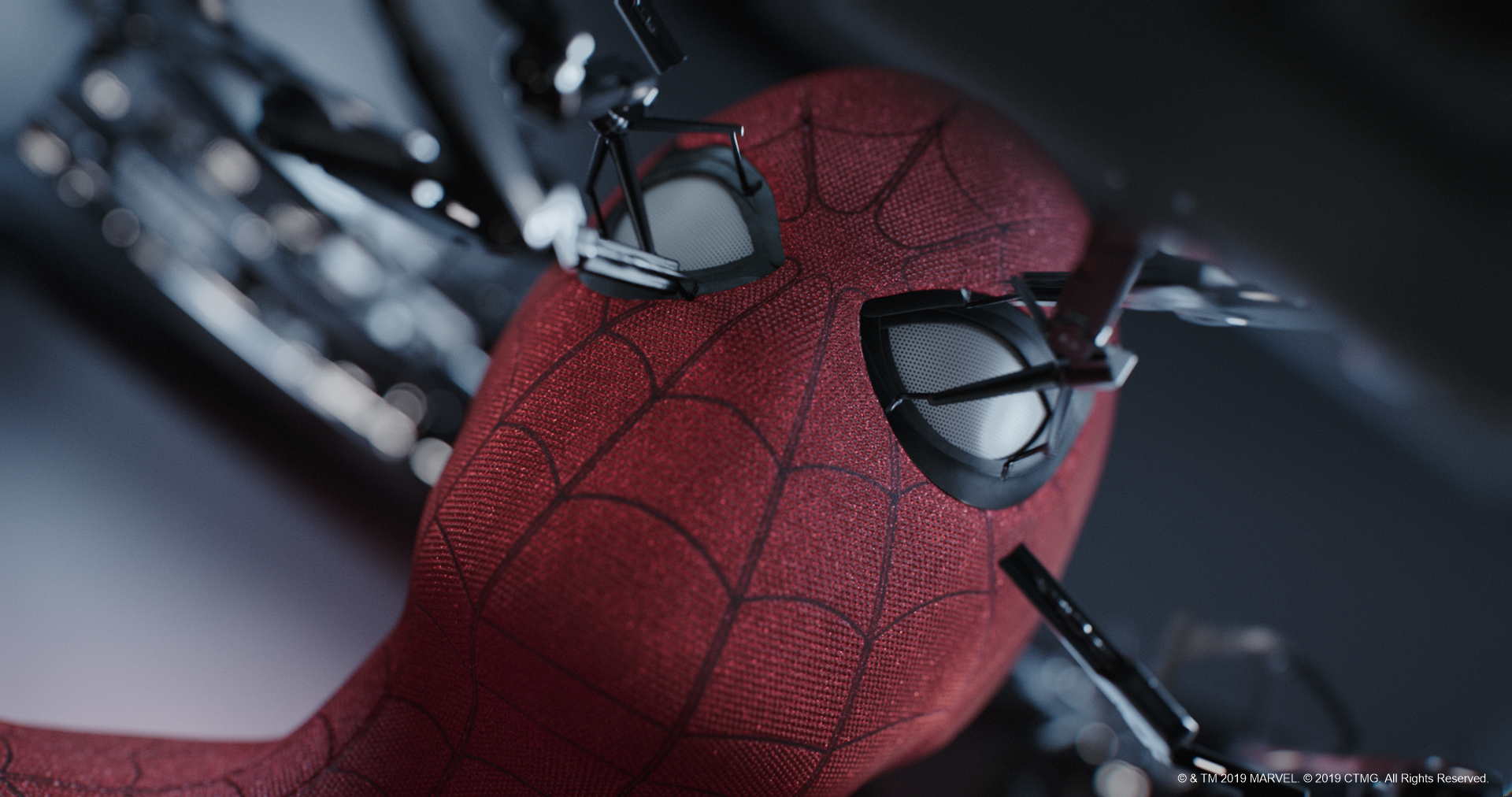
“We suggested two additional micro shots, one of which sees the iconic spider logo added to the suit in a standout hero moment,” says Mesana. “That was exciting as we weren’t solely developing the idea of the machine. Our ideas were also informing the narrative impact of the scene and what it meant for Peter’s character development.”
More than garden variety
The Stark Jet’s most striking scene occurs during Peter’s sojourn to The Netherlands. Stranded after his first defeat at the hands of Mysterio, Peter rendezvous with Happy and the Stark Jet amid a bed of vibrant tulips.
Once again, Holland and Favreau were the only remaining elements from the plate photography. But this time, rather than filming on greenscreen, a real-world field provided the backdrop.
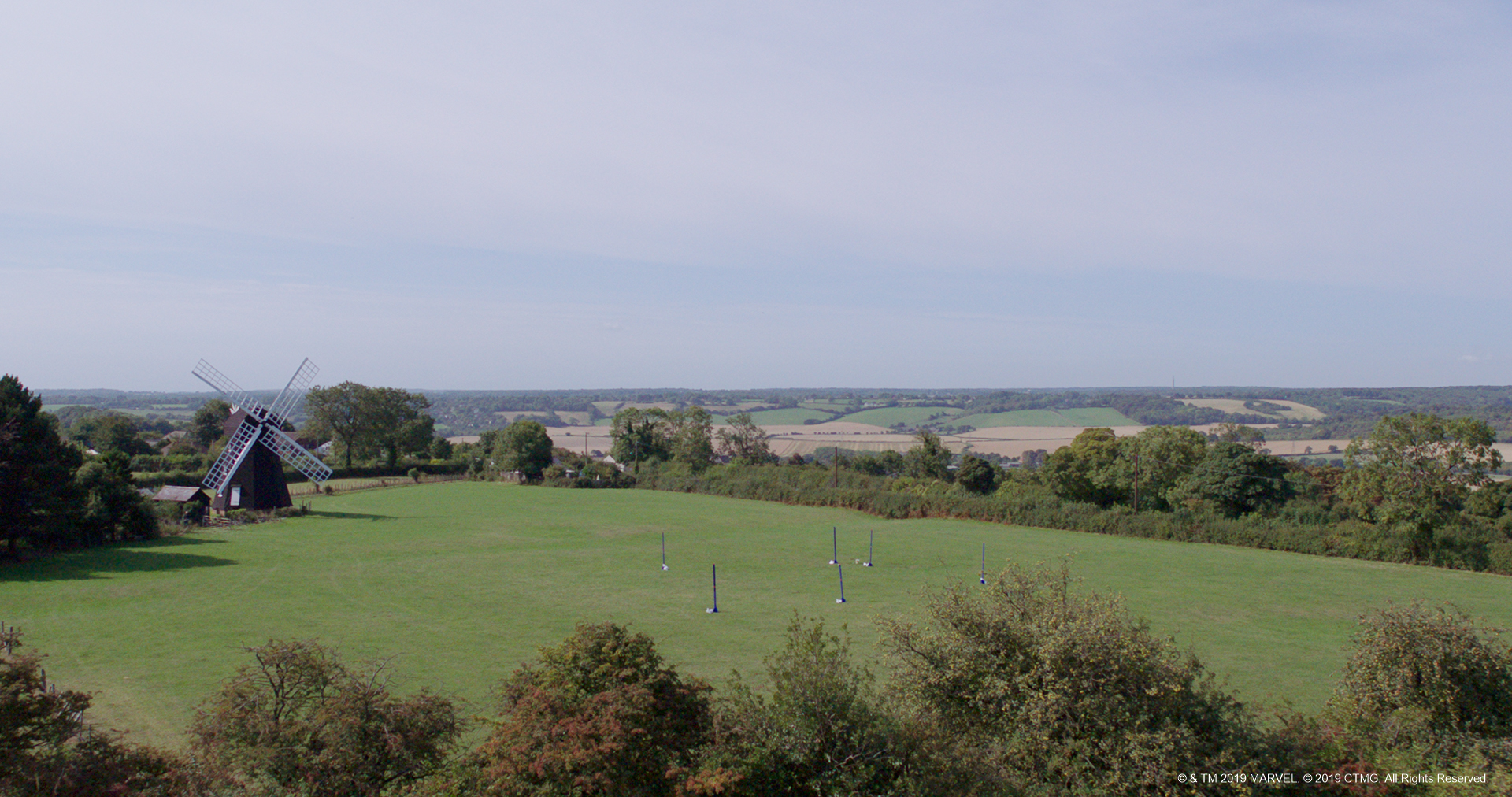
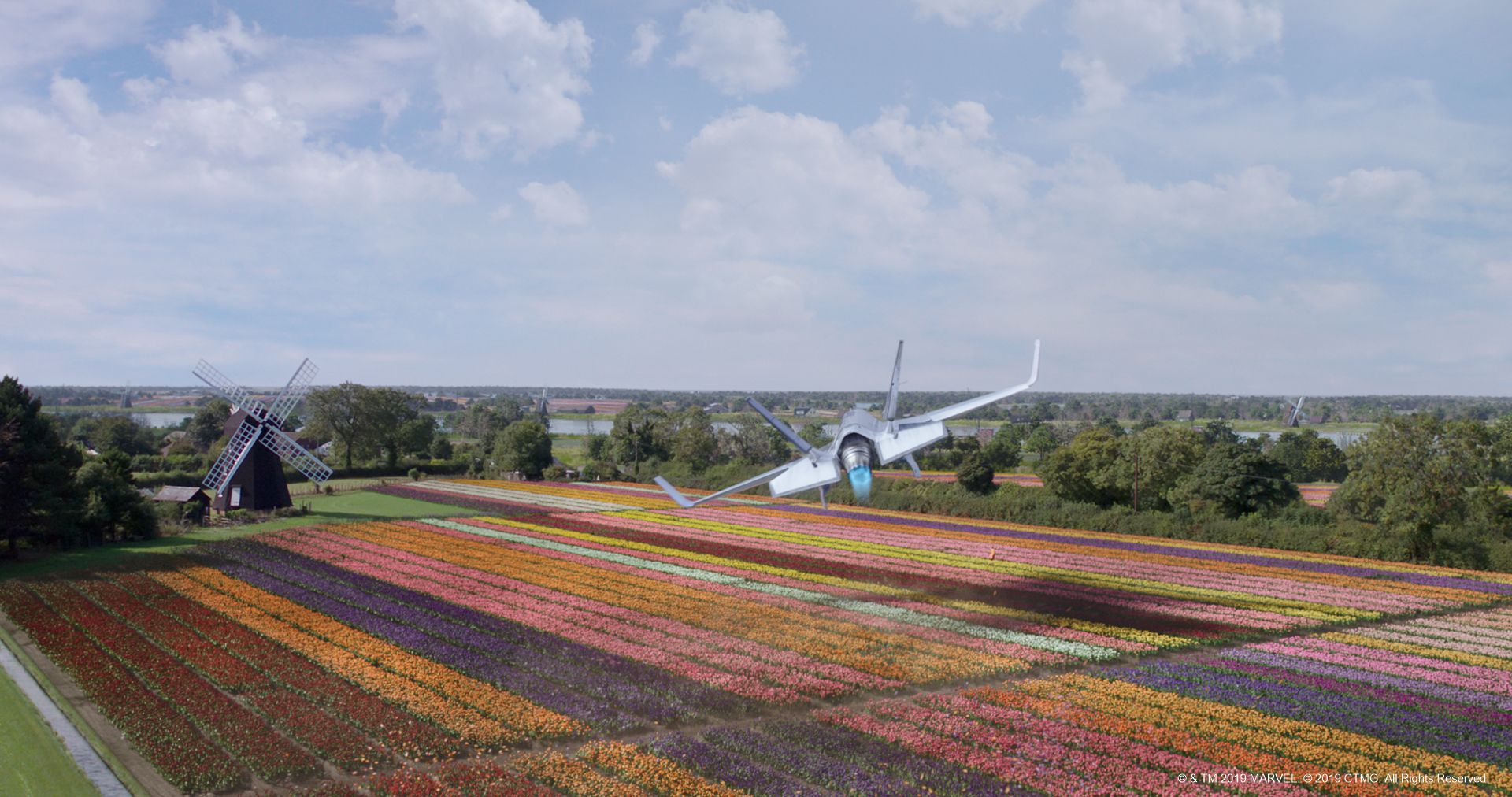
The compositing team built out CG background replacements, including farm environments, hedges, and cars on the distant horizon. They also altered the sky, as Elophe explains: “The plate sequence had grey, overcast skies. We added a blue sky with more detailed clouds. The way its light bounced off the saturated tulips integrated them into the scene beautifully.”
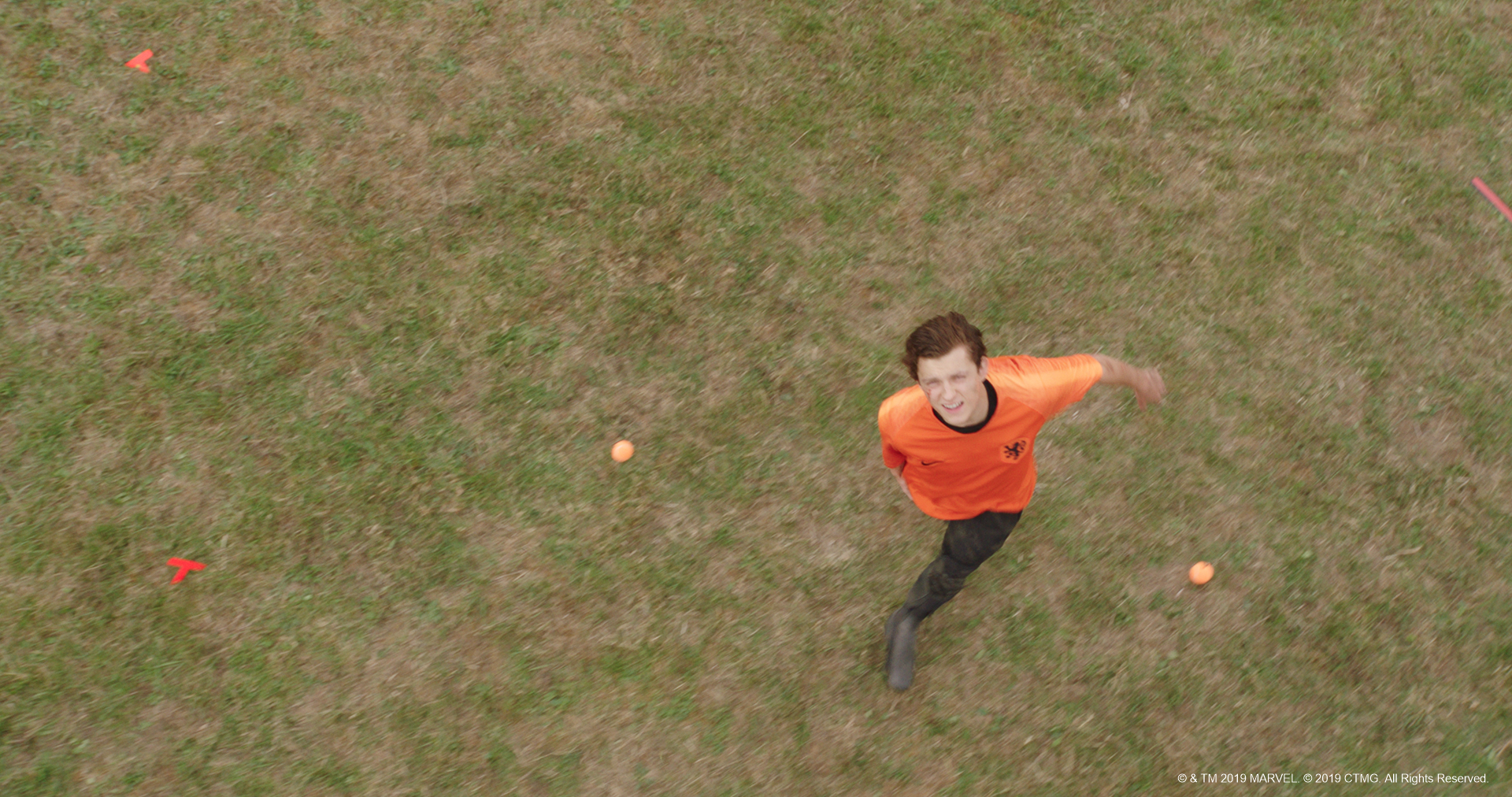

Believably integrating the two actors into the scene required several tweaks. “We rotomated them to add shadows and reflections from the tulips. Every angle required specific colours,” says Depredurand. The compositing team also needed to adjust the scene’s topography, pushing the ground plate up to account for a dip descended by Holland in the plate that was not present in the level CG tulip field. “We rebuilt a lot to bring everything into the right physical space,” says Elophe.
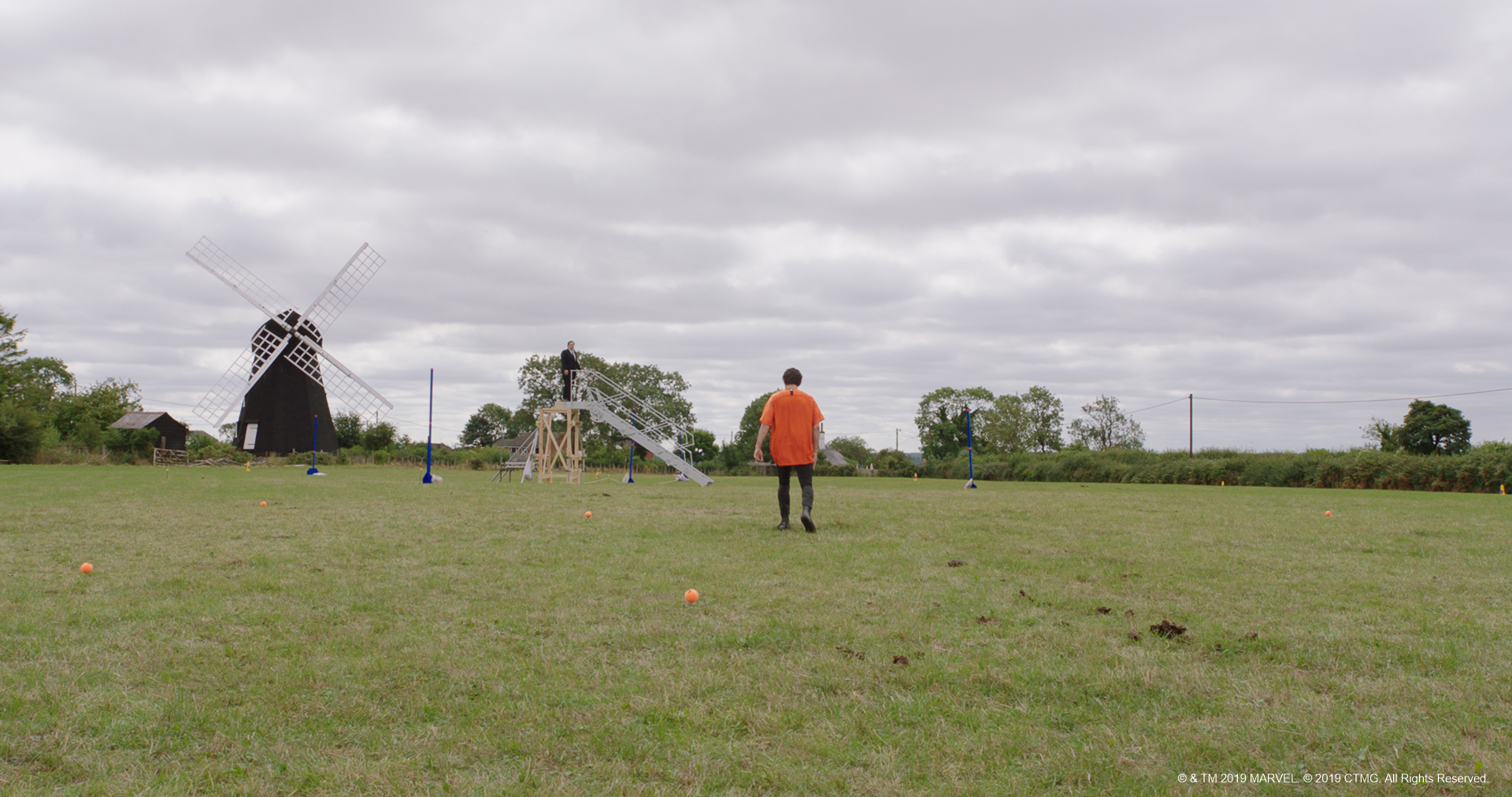
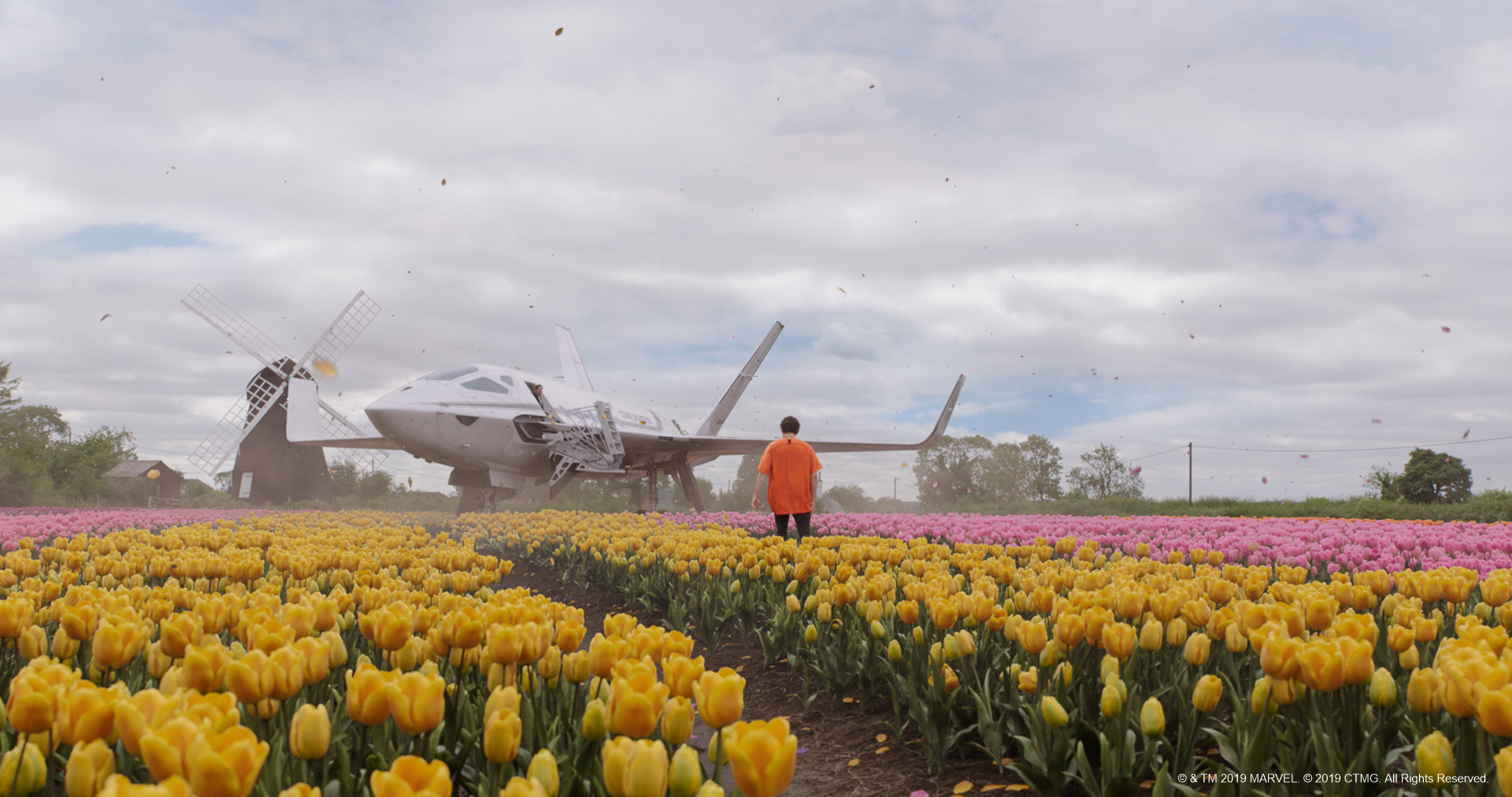
The tulips comprised one of Spider-Man: Far From Home‘s more technical challenges. “The tulips and their interaction with the Stark Jet’s thrusters comprised a mix of simulation and blend shapes, generated at render time through Gaffer and OSL,” says Engelbrecht. “The biggest render had some 200,000 tulips. There were tons of details too, like broken tulips on the ground, scattered petals and leaves, footprints in the mud, and dust stirred up by the jet – the continuity of which we had to consider throughout the scene’s progression.”
Building the MCU
Over 23 films Marvel has created more than a series of films, but a tremendous, vibrant, self-contained universe. If any cinematic endeavor deserves the “more than the sum of its parts” accolade, it’s undoubtedly the MCU.
The same goes for the work produced by Image Engine in this momentous closing chapter to Marvel’s first stupendous saga. “When you stack together the work that the team did over six months, rather than considering it piece by piece, it’s a remarkable achievement,” says Grosshans.
“This wasn’t one self-contained sequence; it was a hugely complex plate-spinning act. We developed the tulip field and the laser effects; we adjusted the design of the sonic drone; we worked alongside Marvel to concept Stark technology and to apply visual effects to storytelling. To top it all off, we got to develop a bit of Peter Parker’s new Spider-Man suit!
“Working with Marvel is amazing,” he concludes. “What they have created is something else. We’re so proud for Image Engine to have had such an opportunity to make its mark on the MCU. We can’t wait to see where Marvel takes its universe next.”


